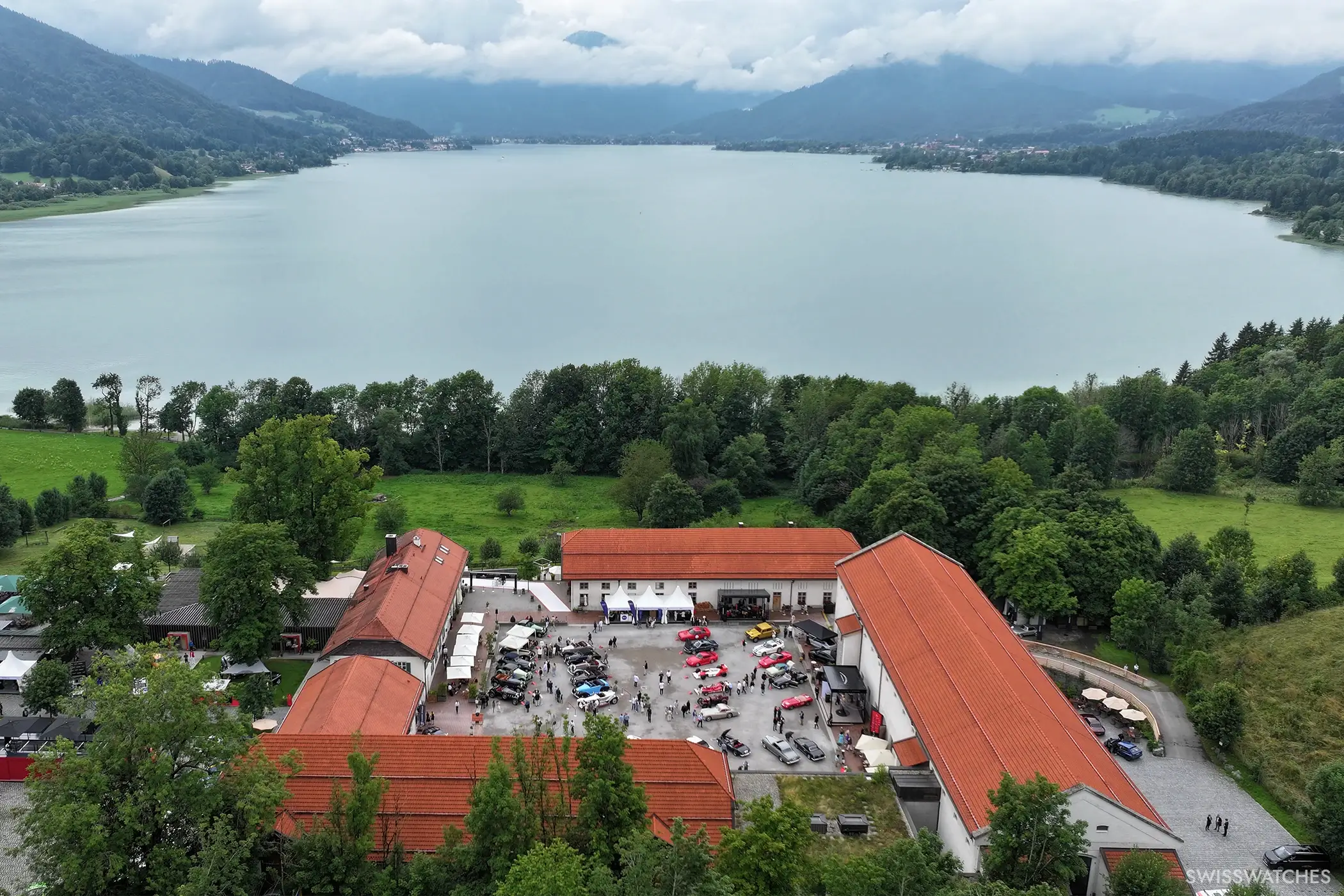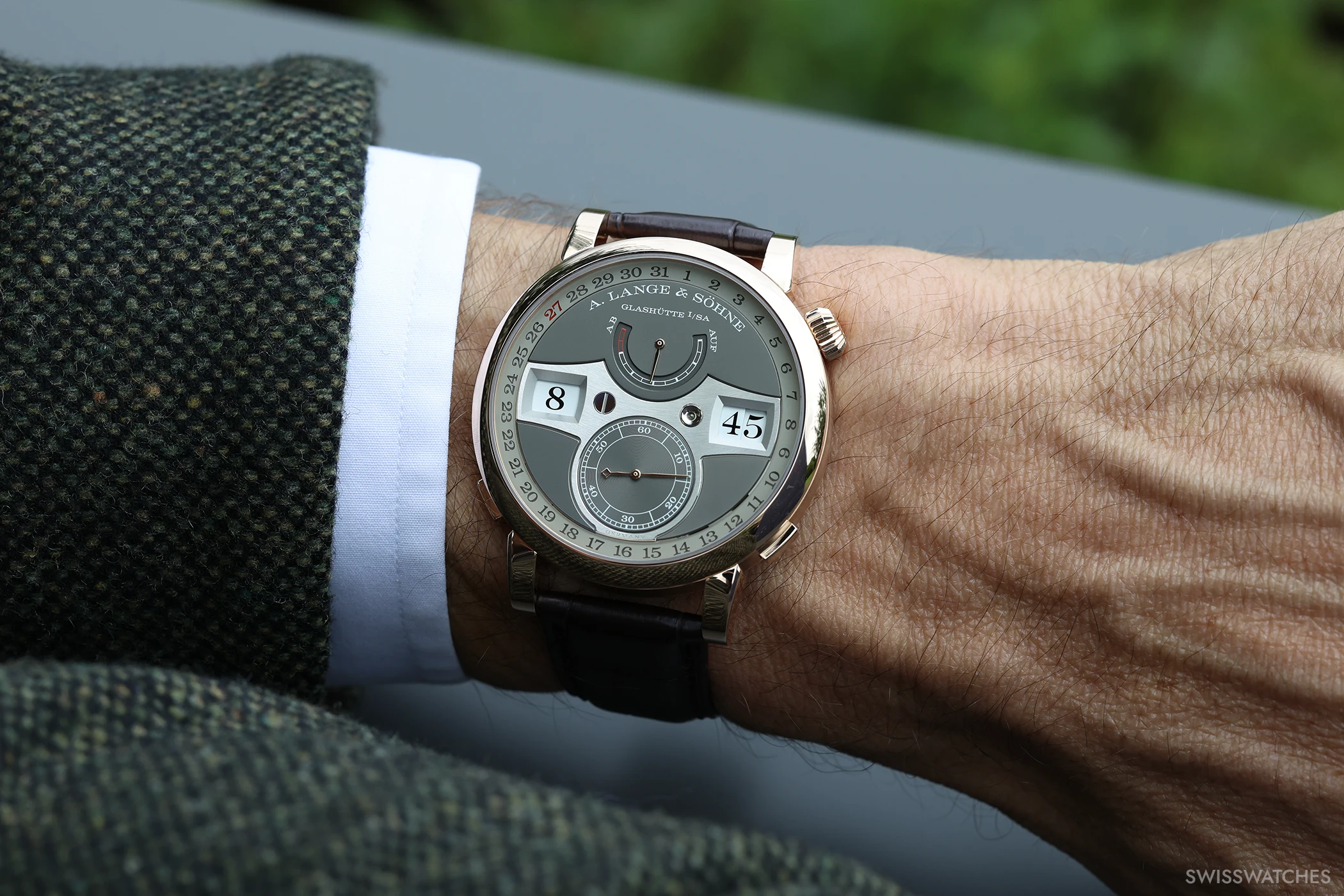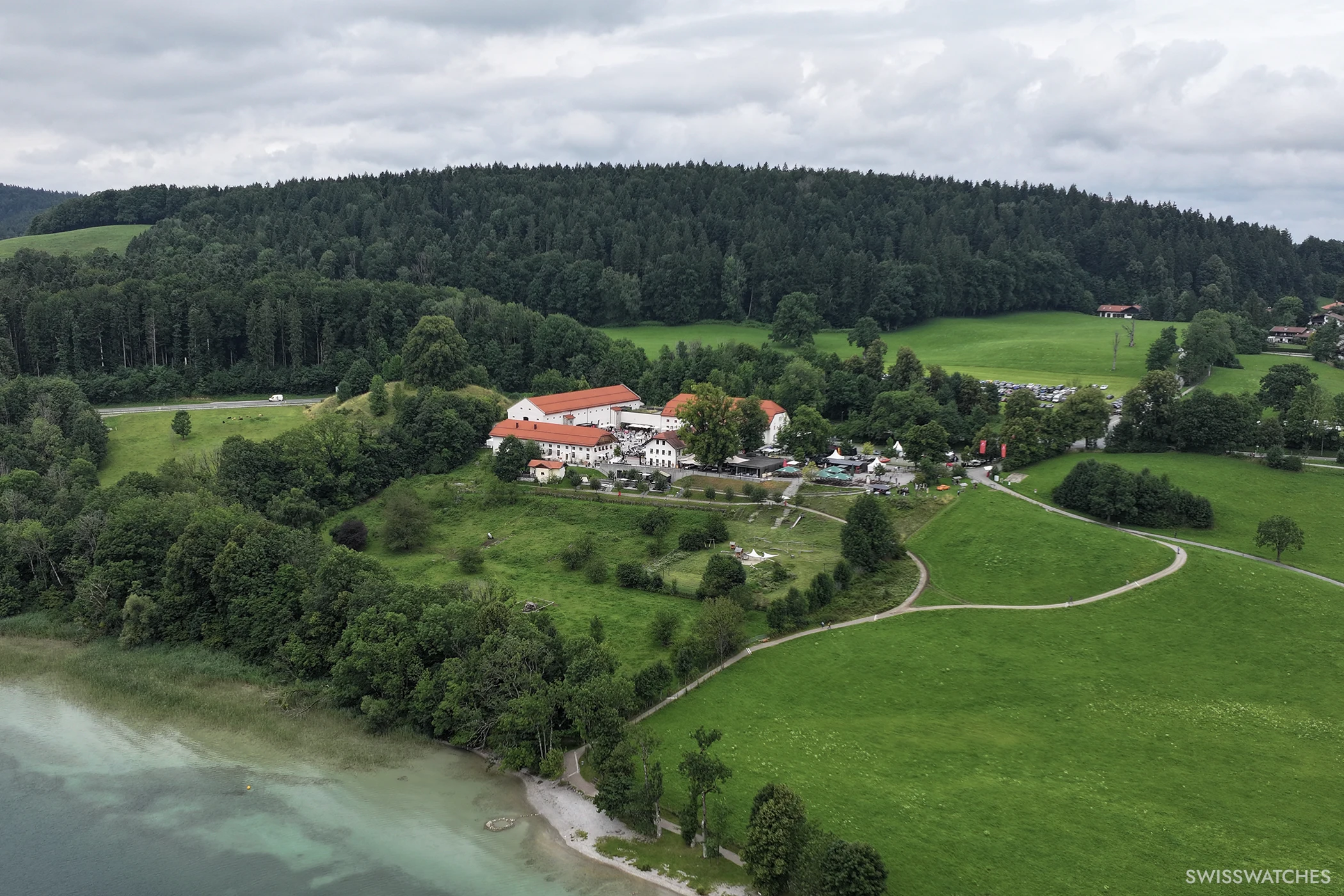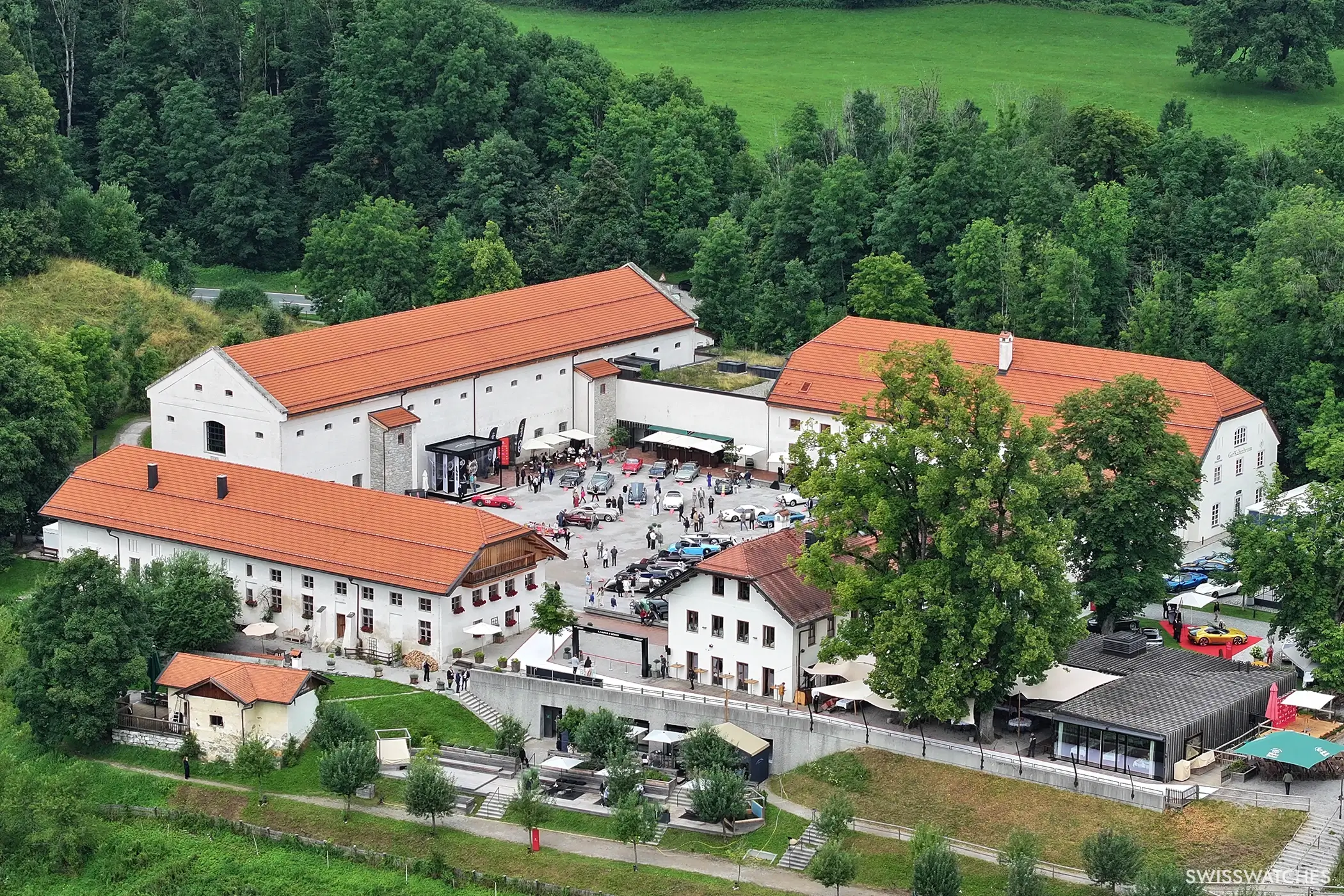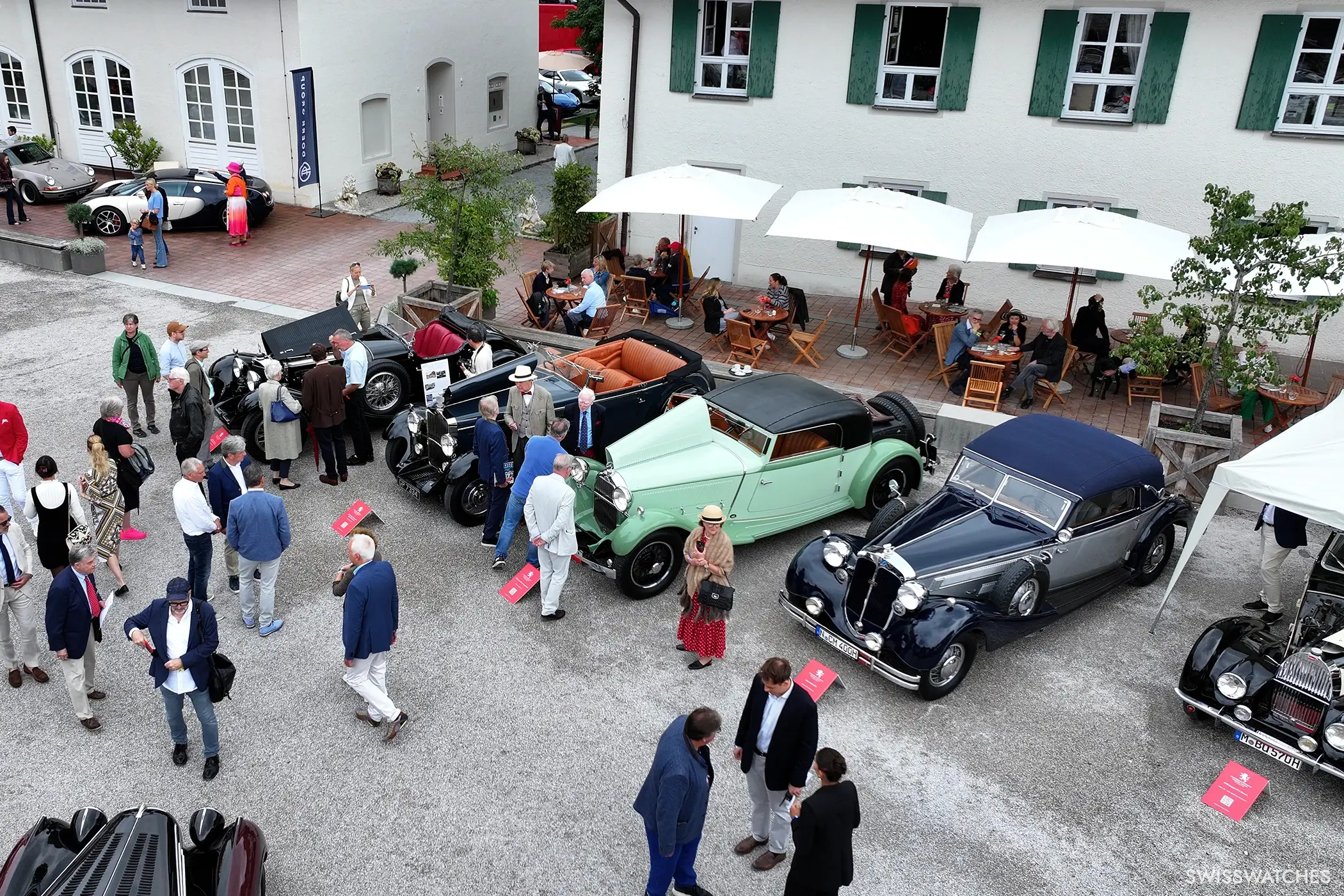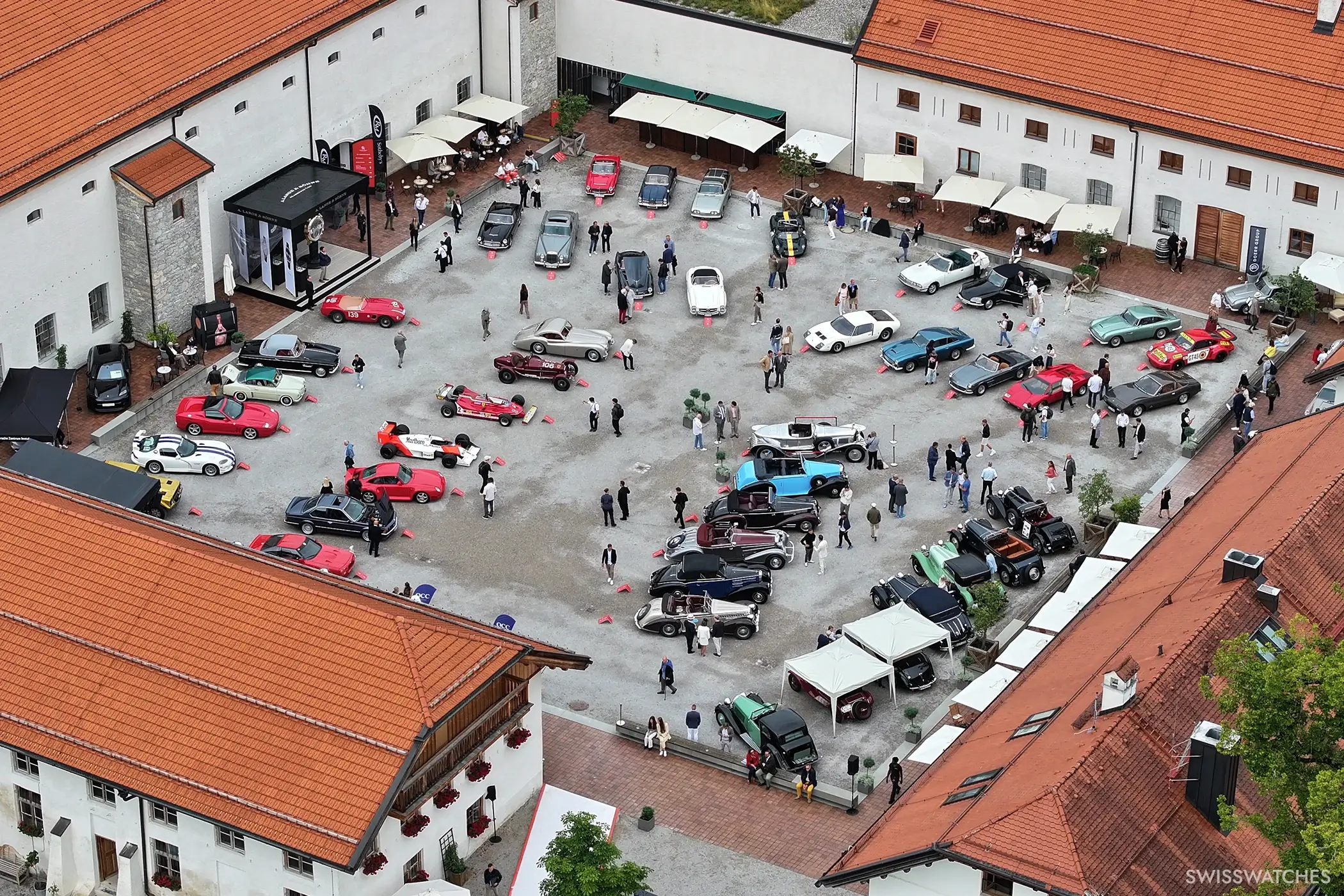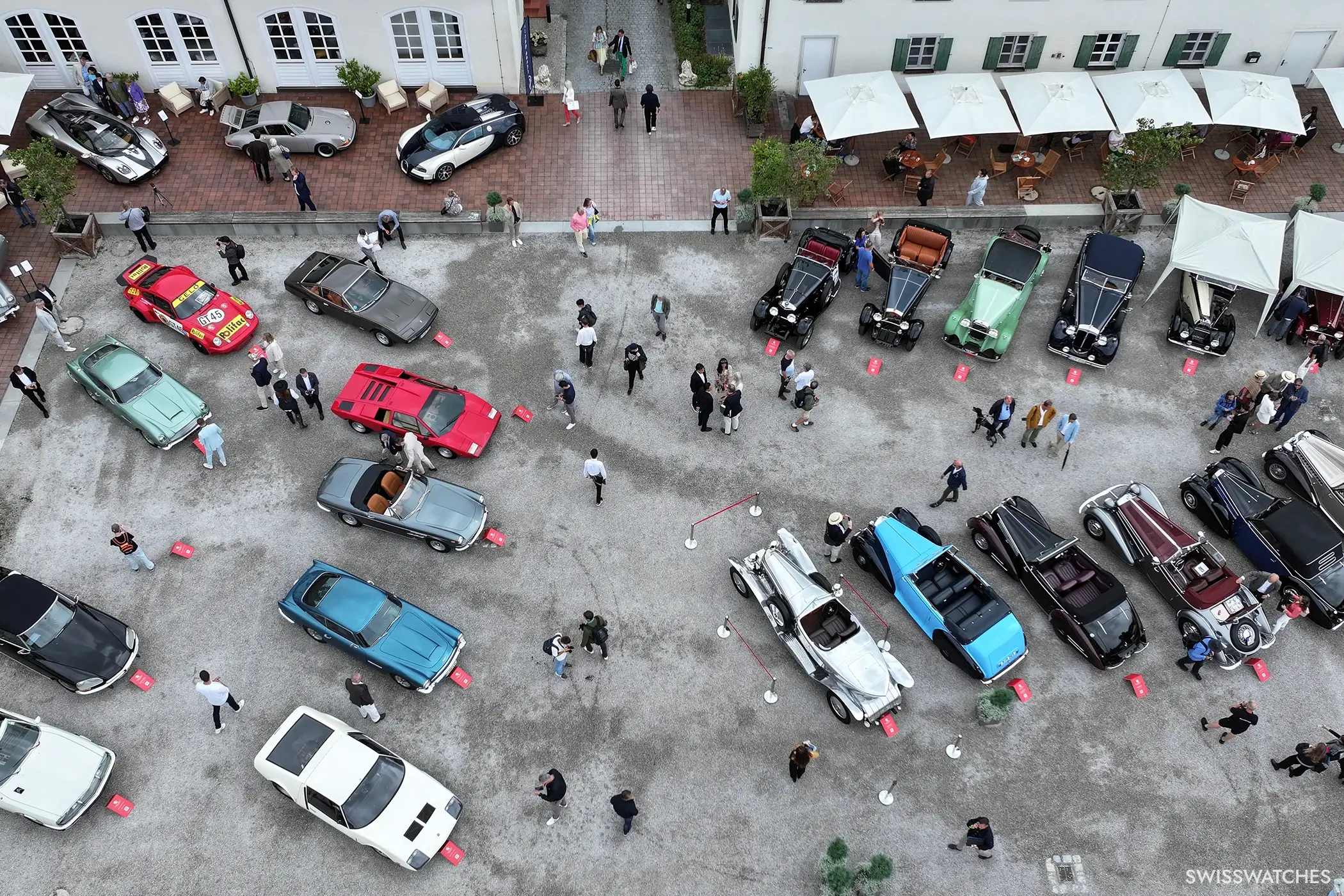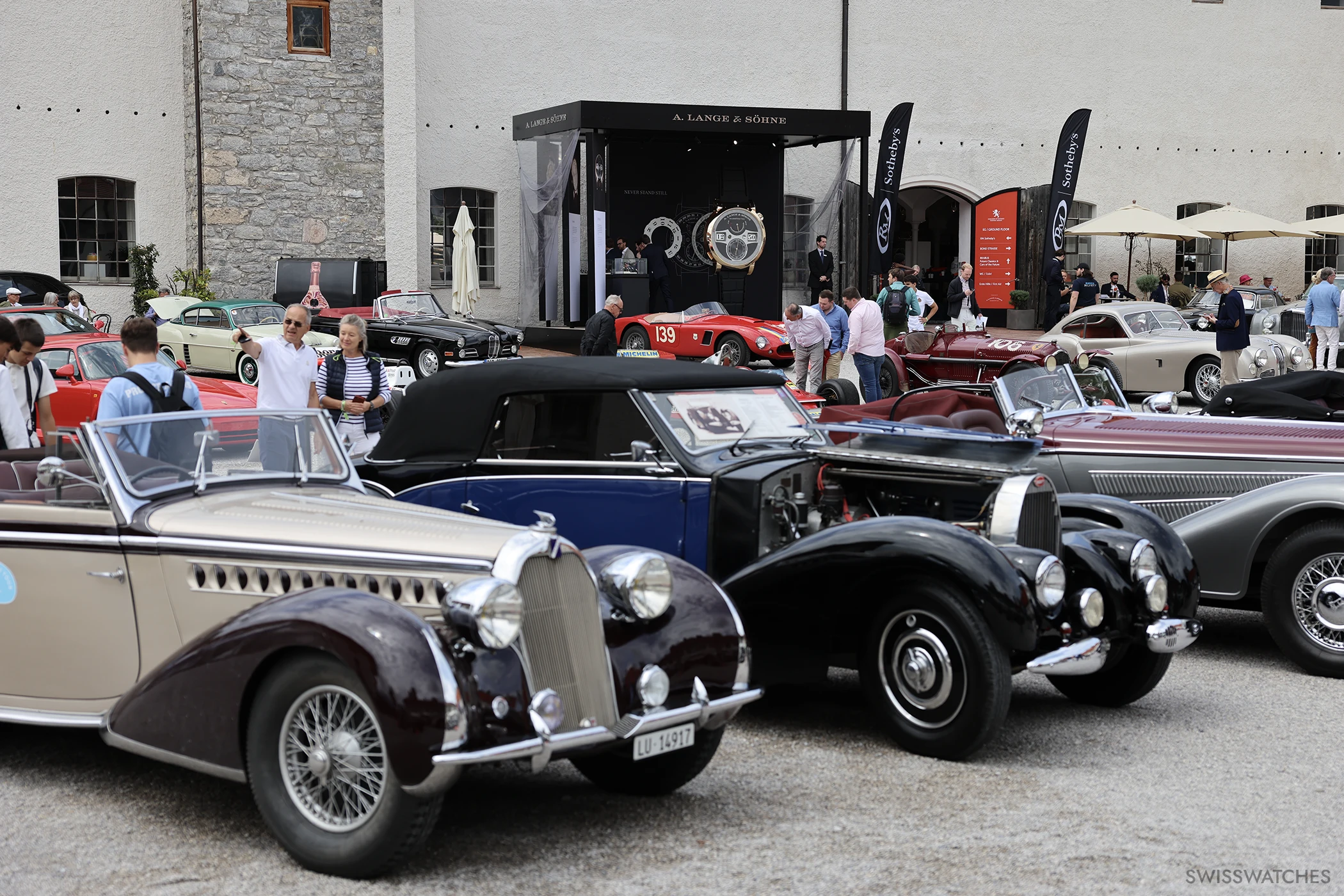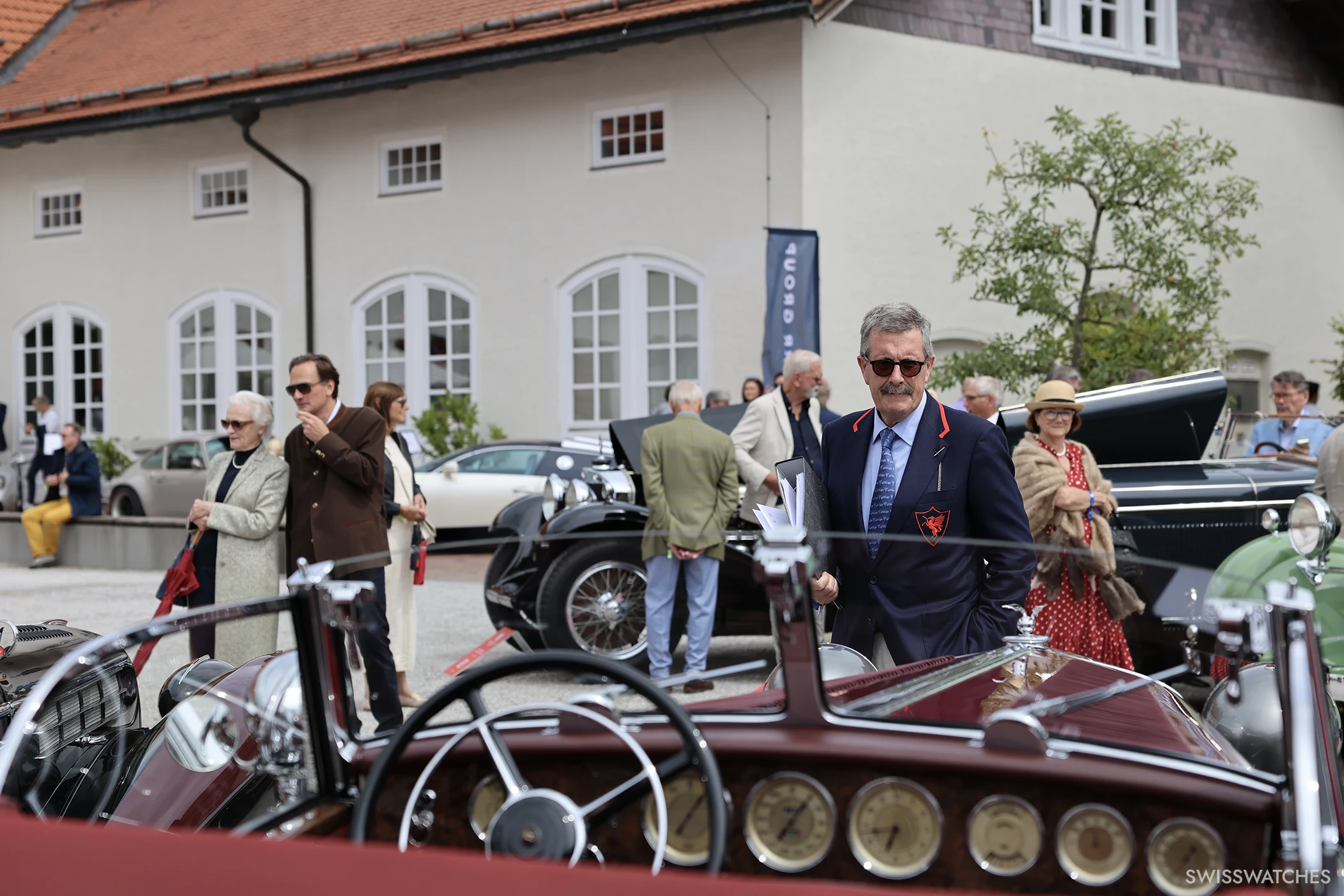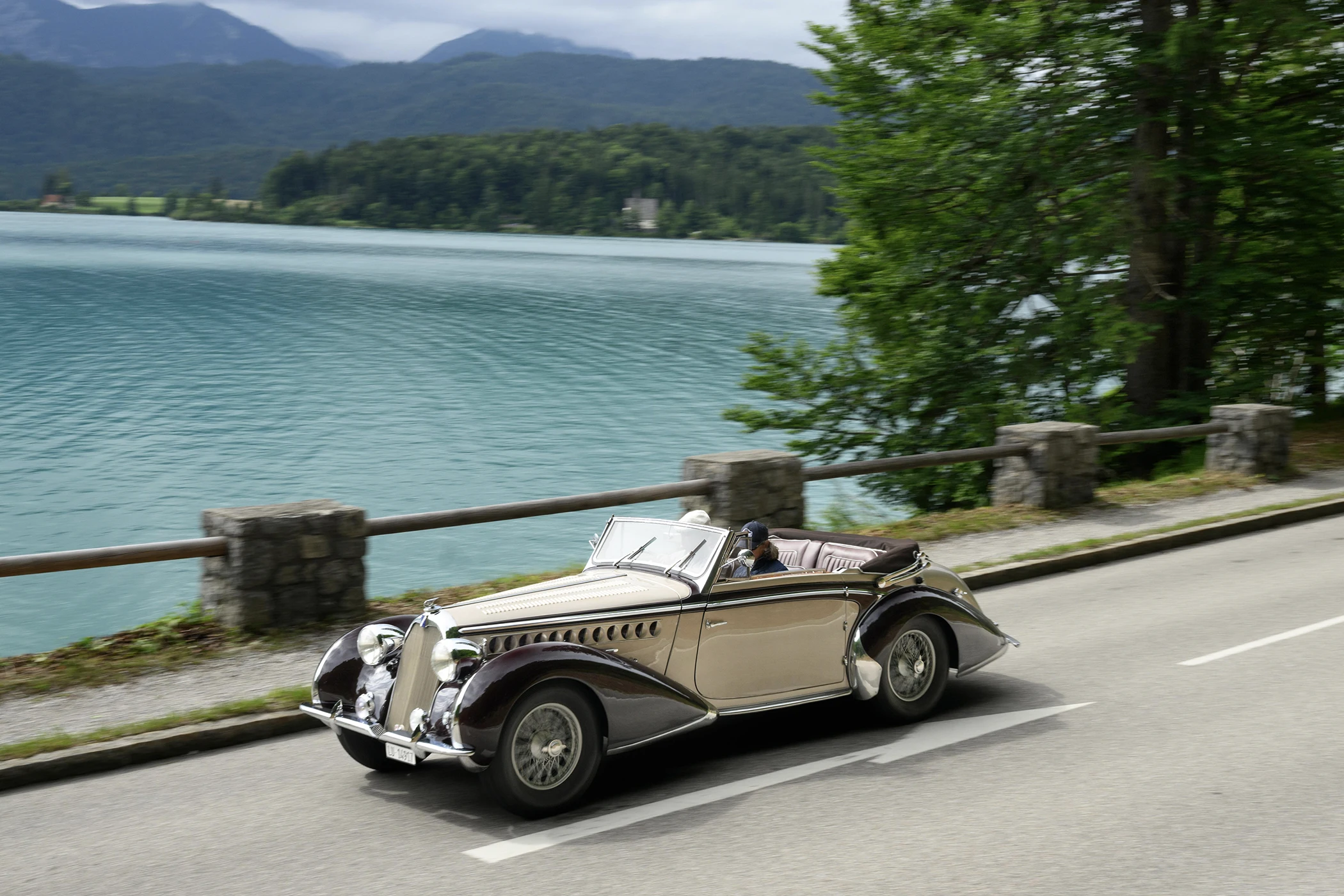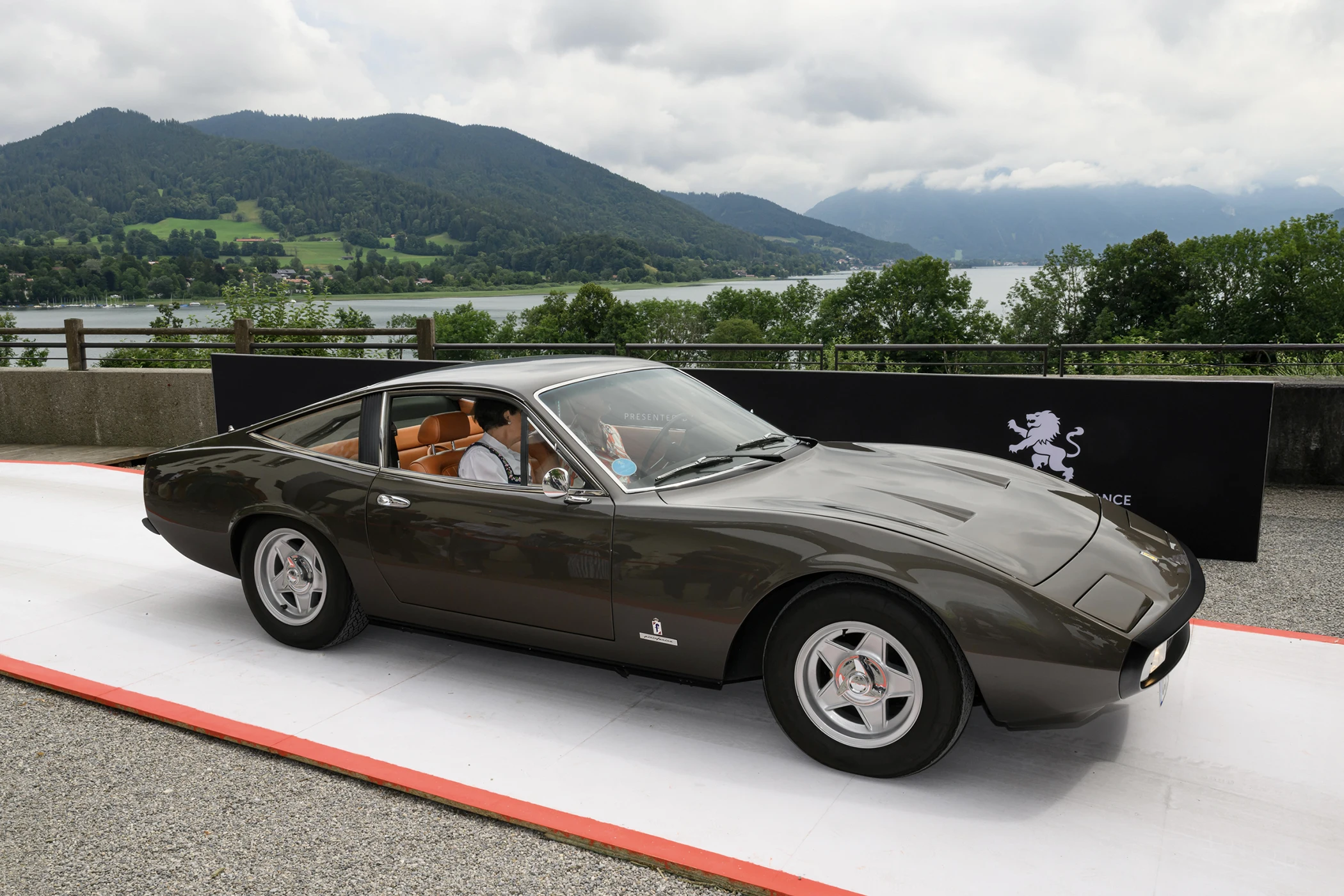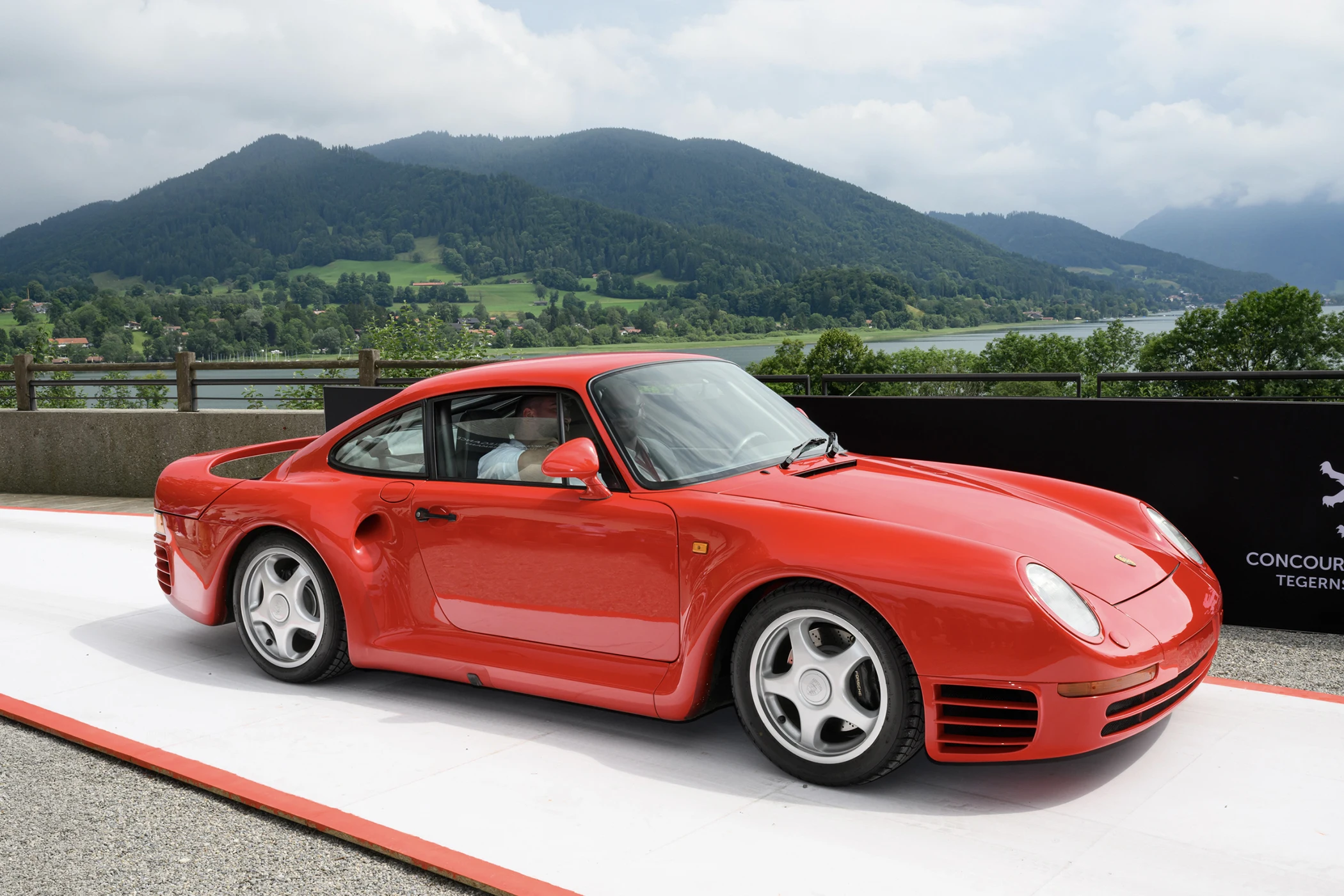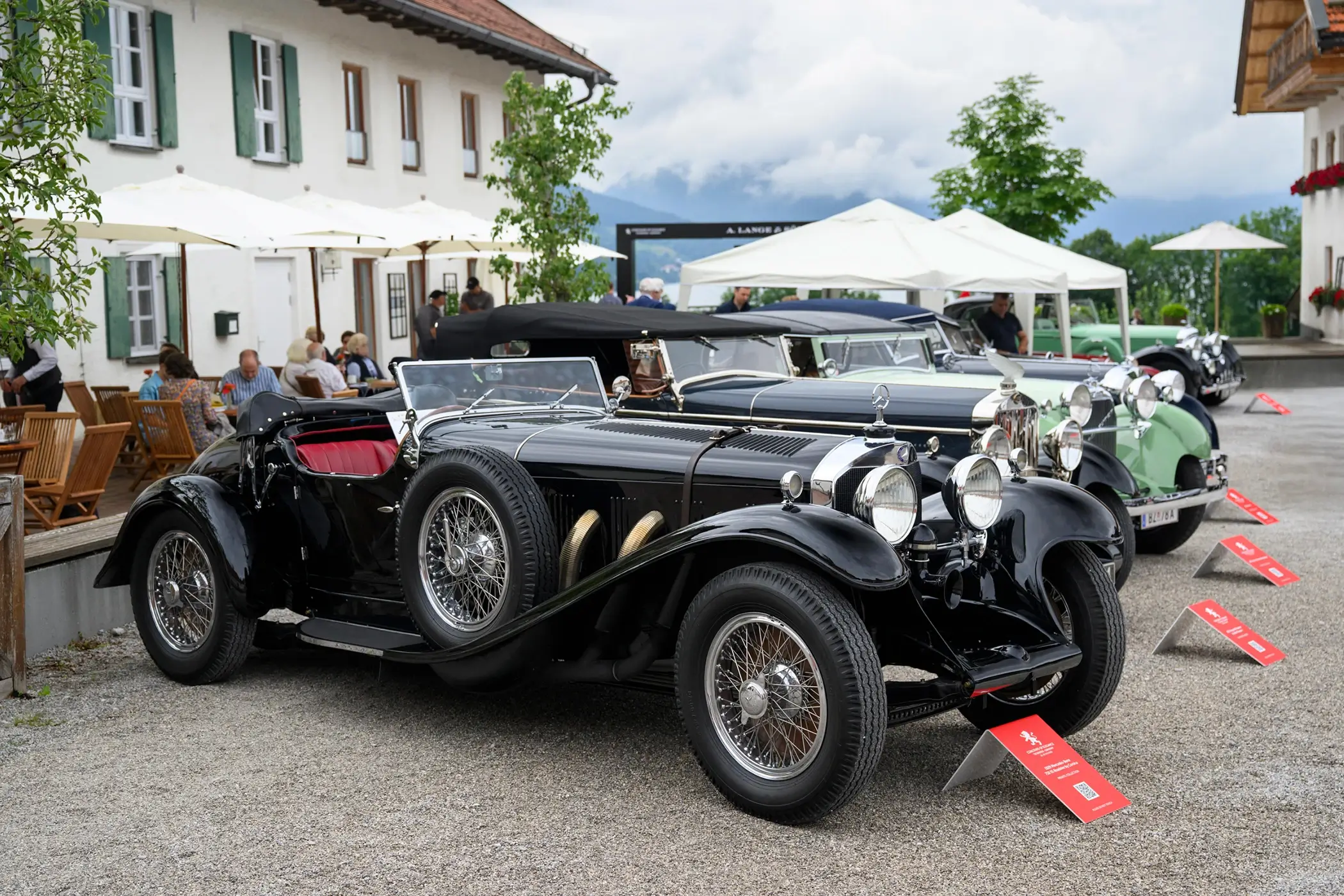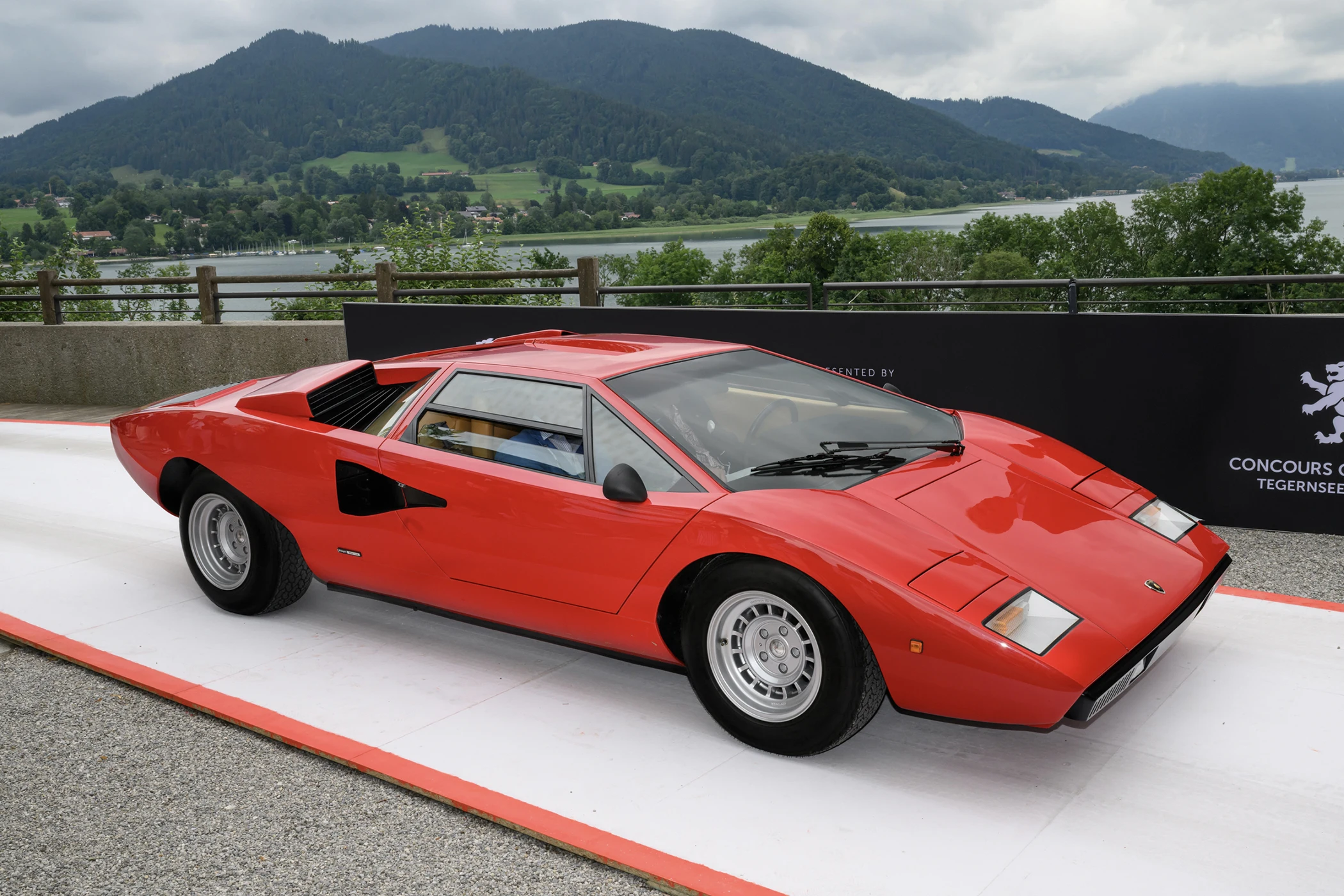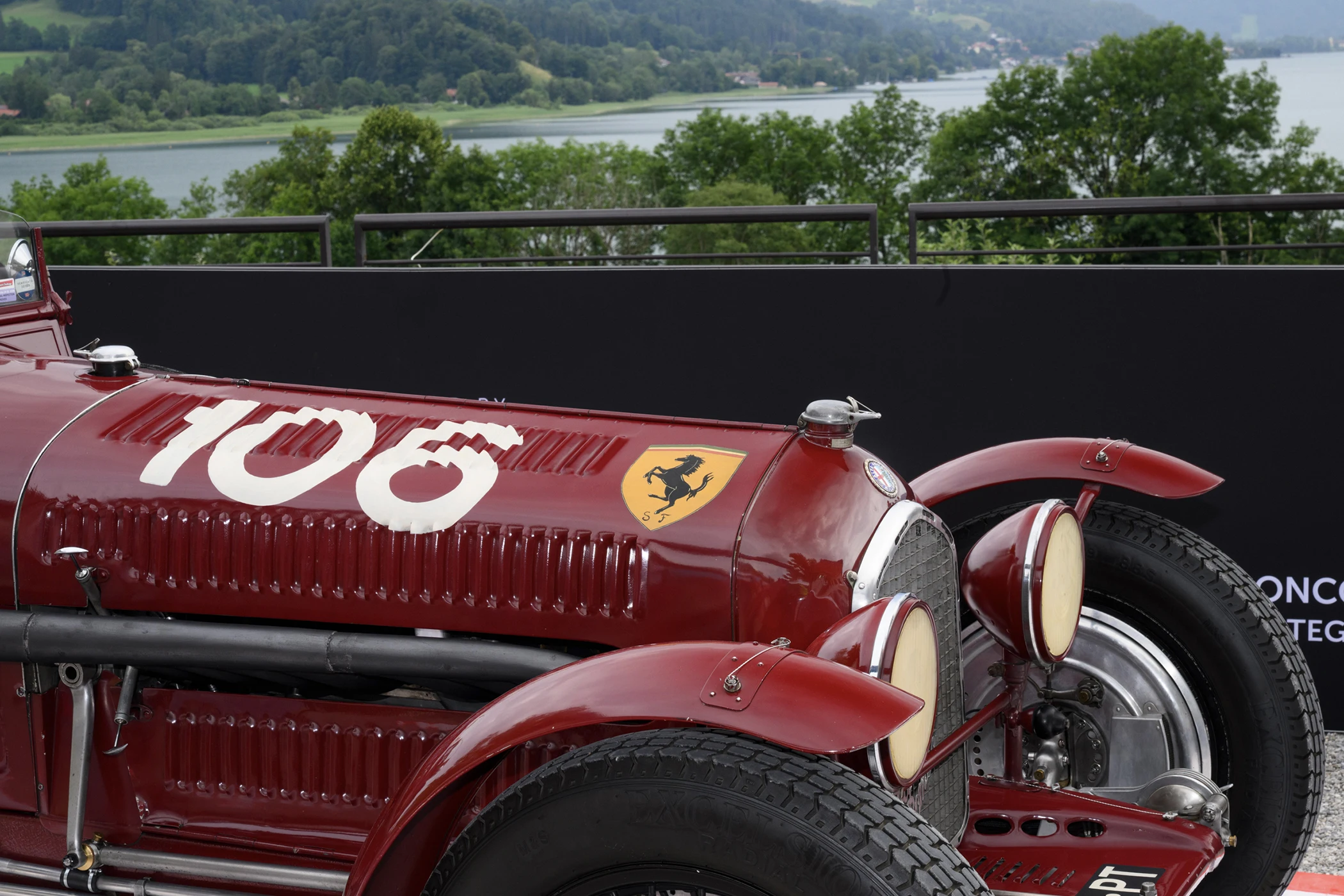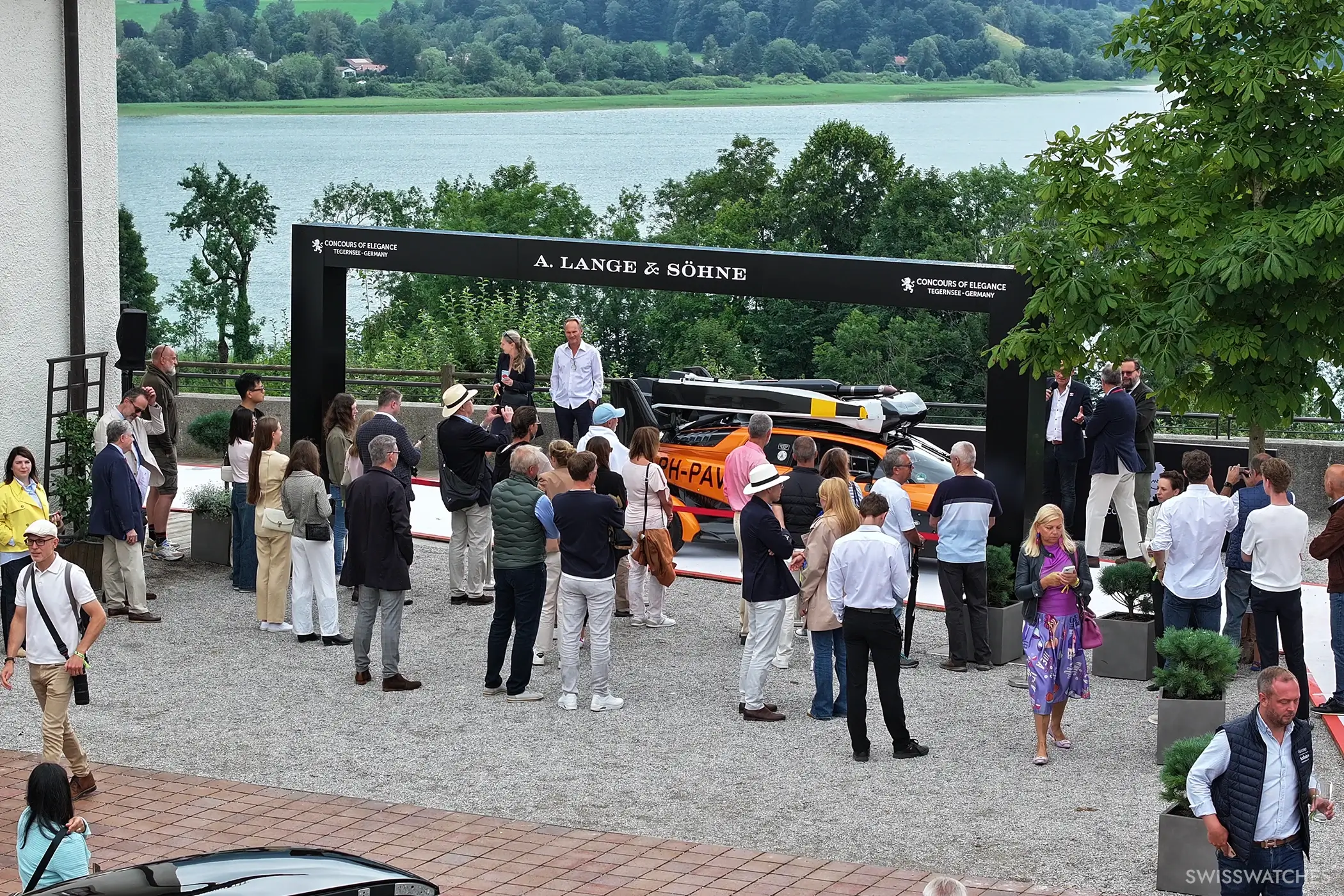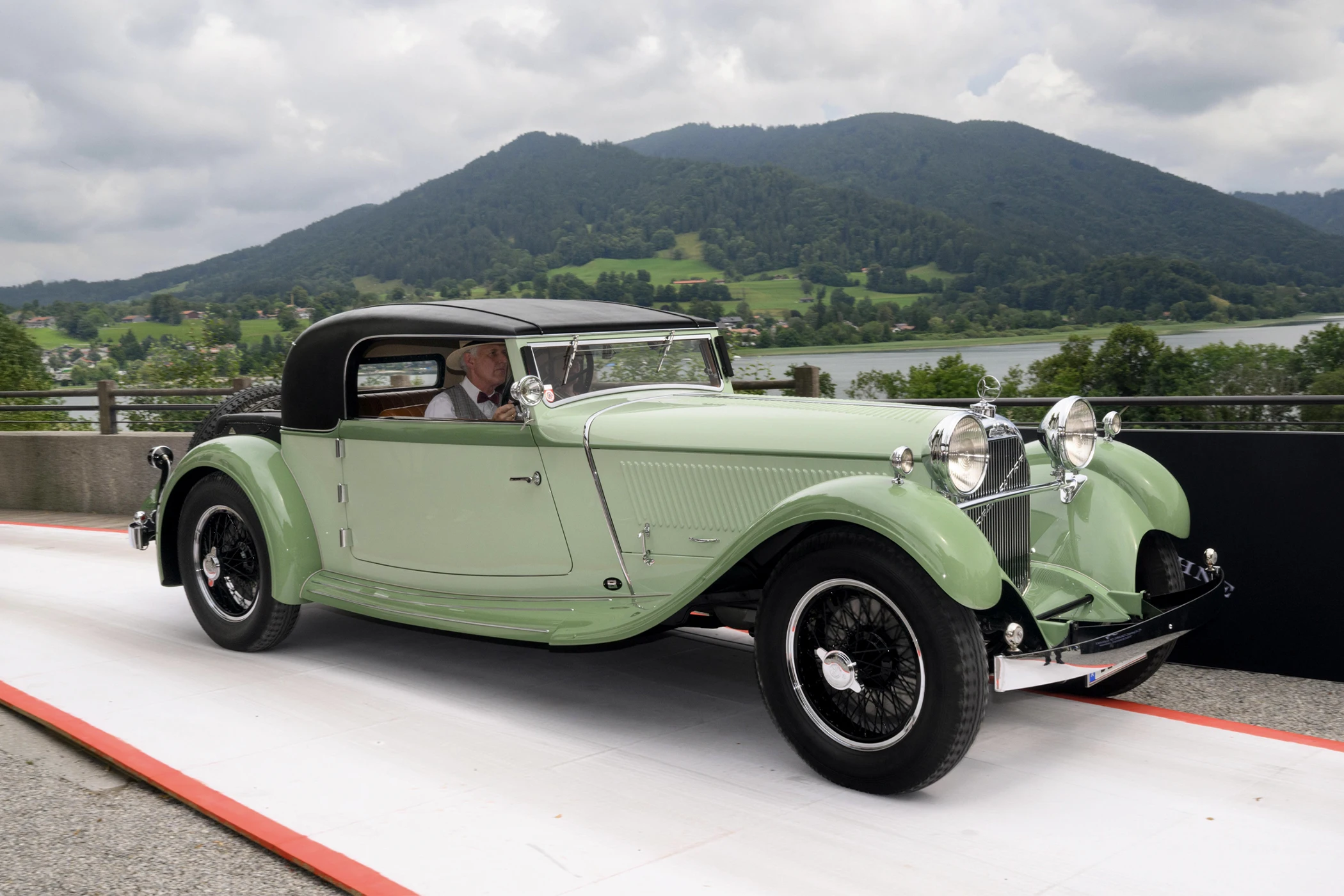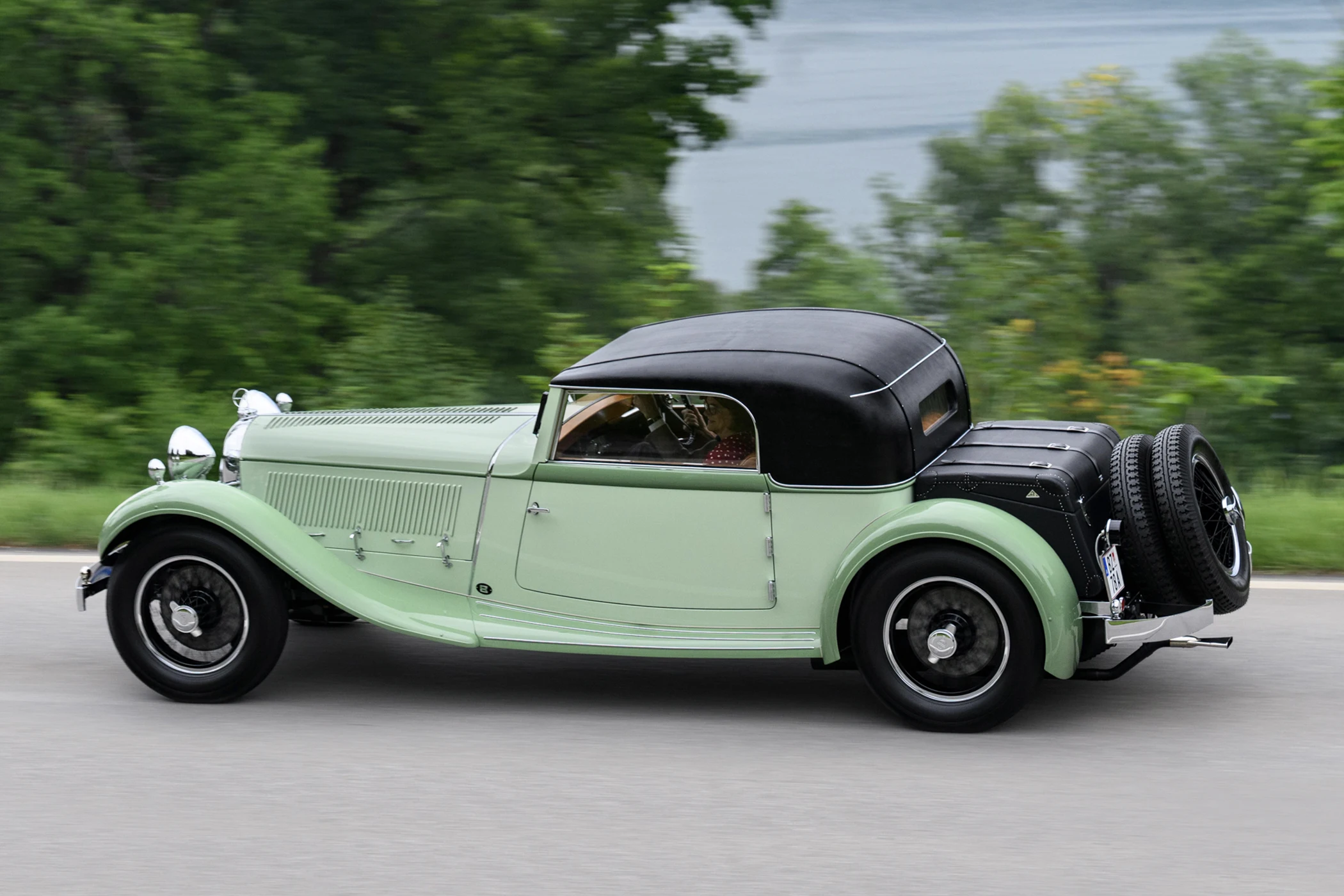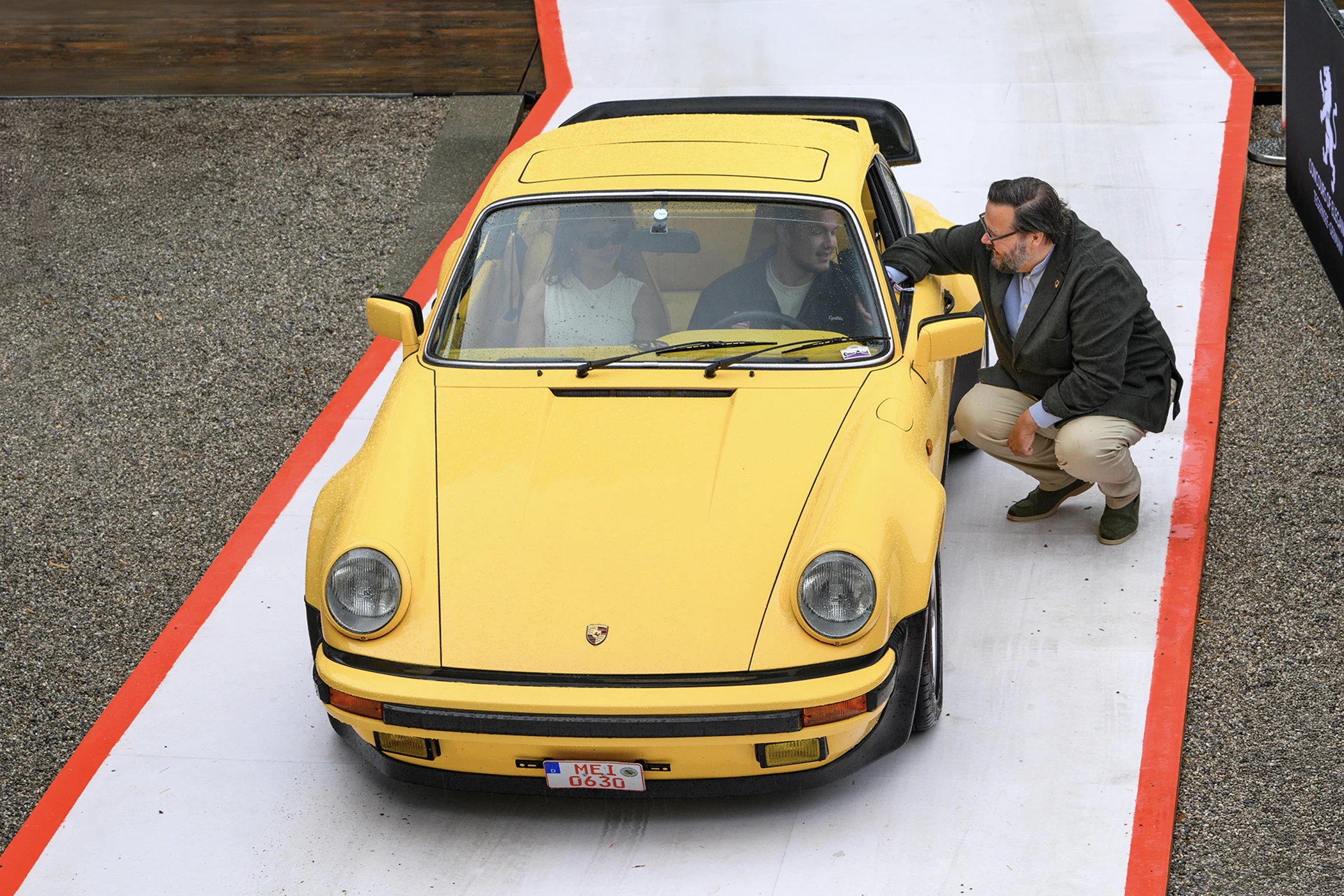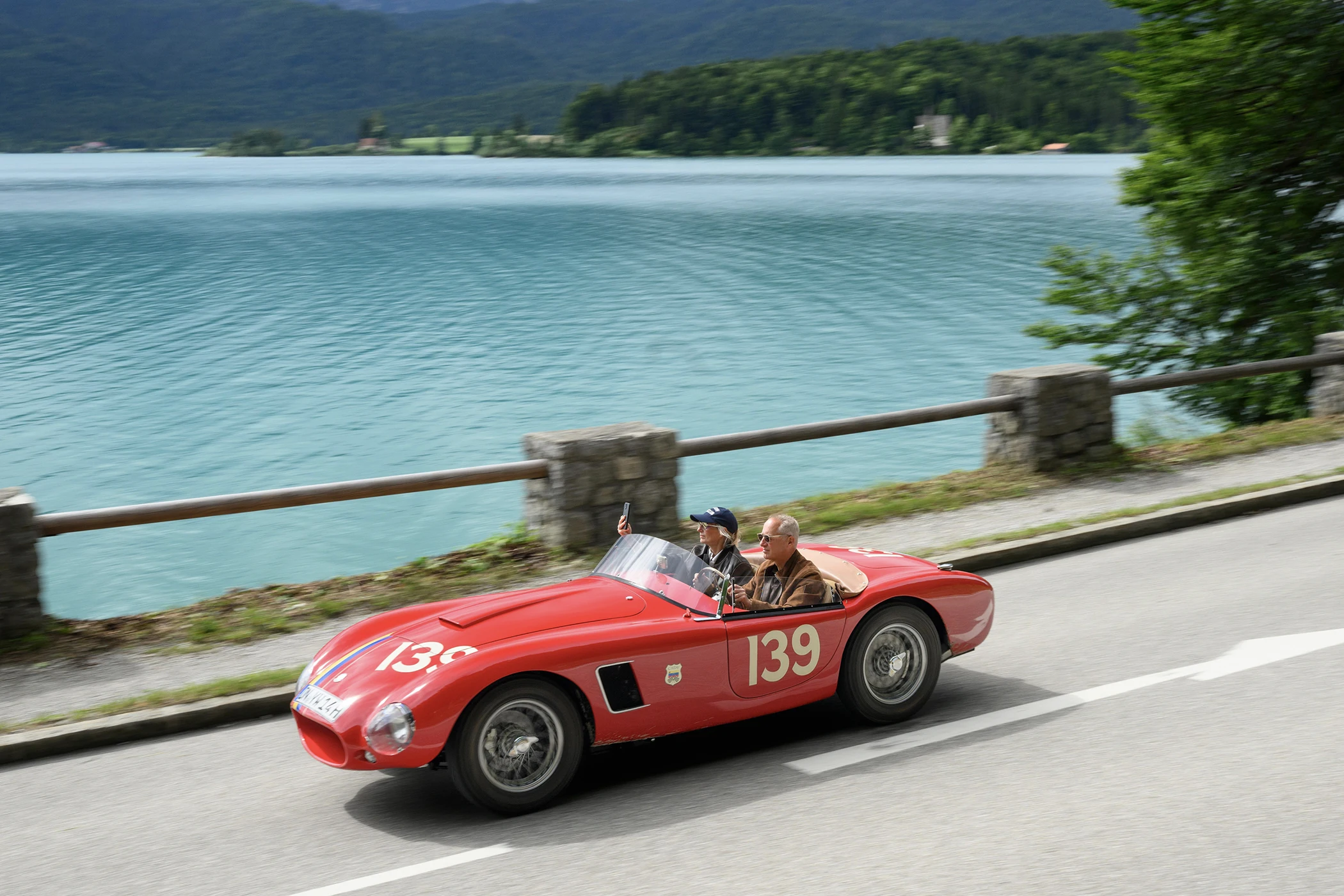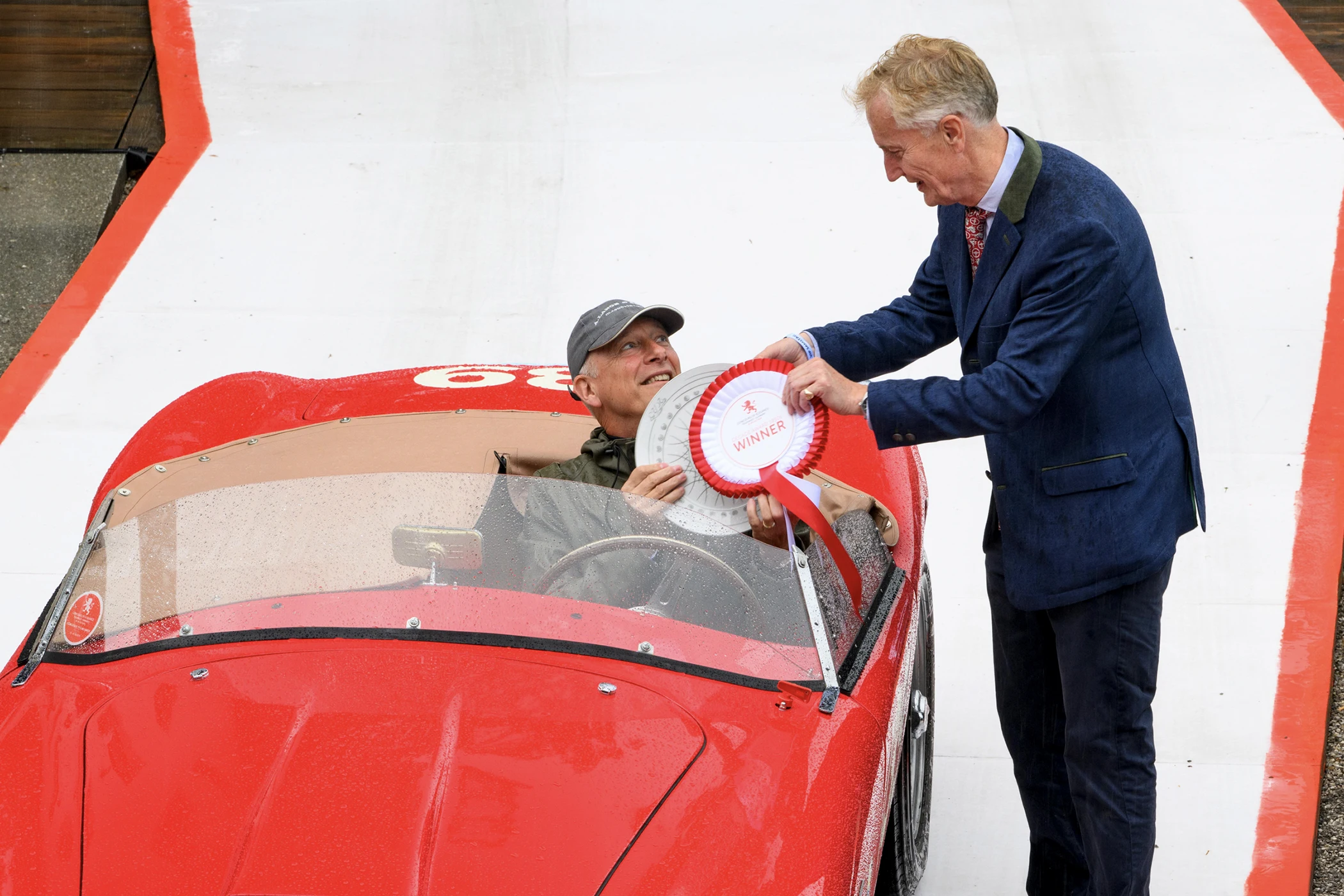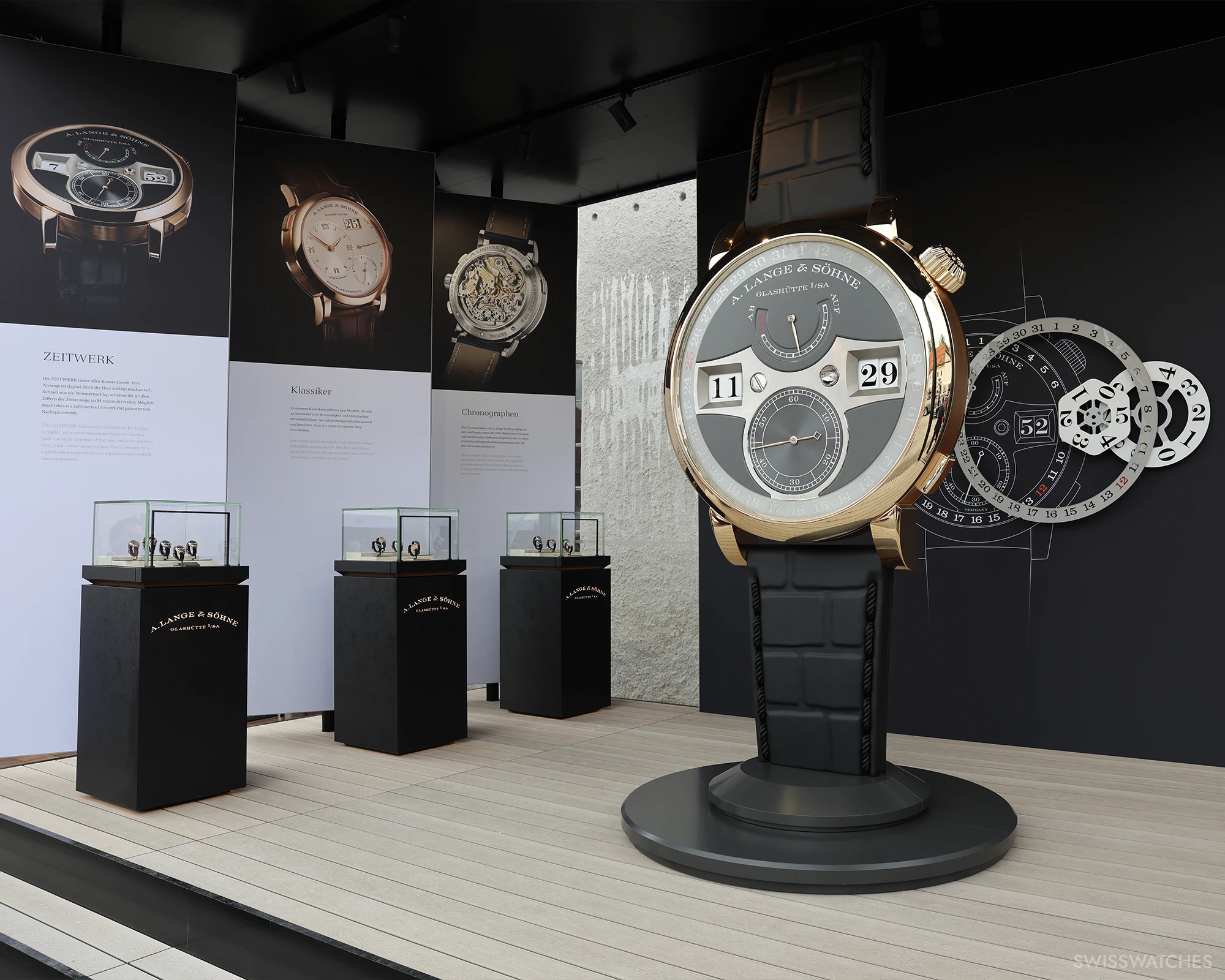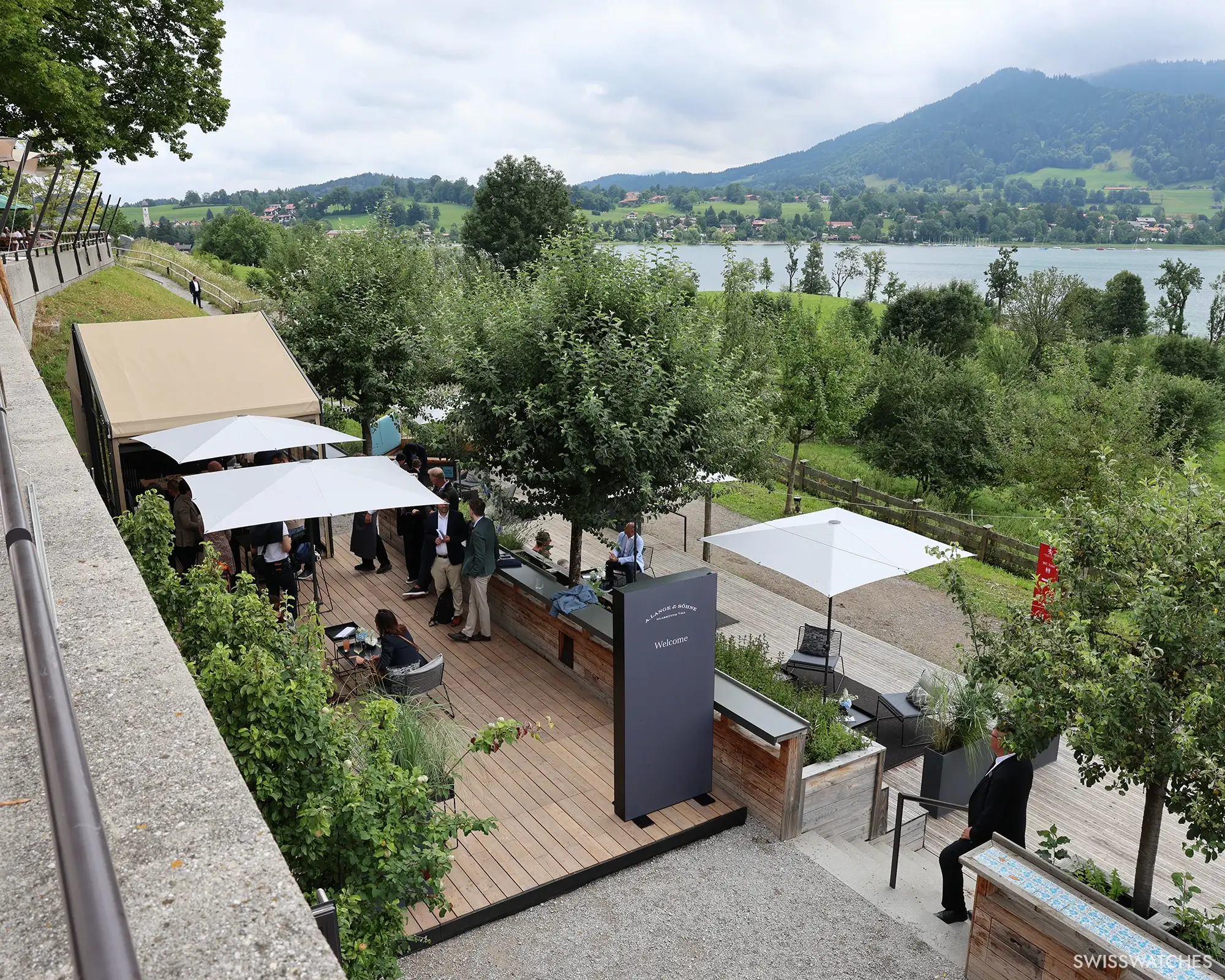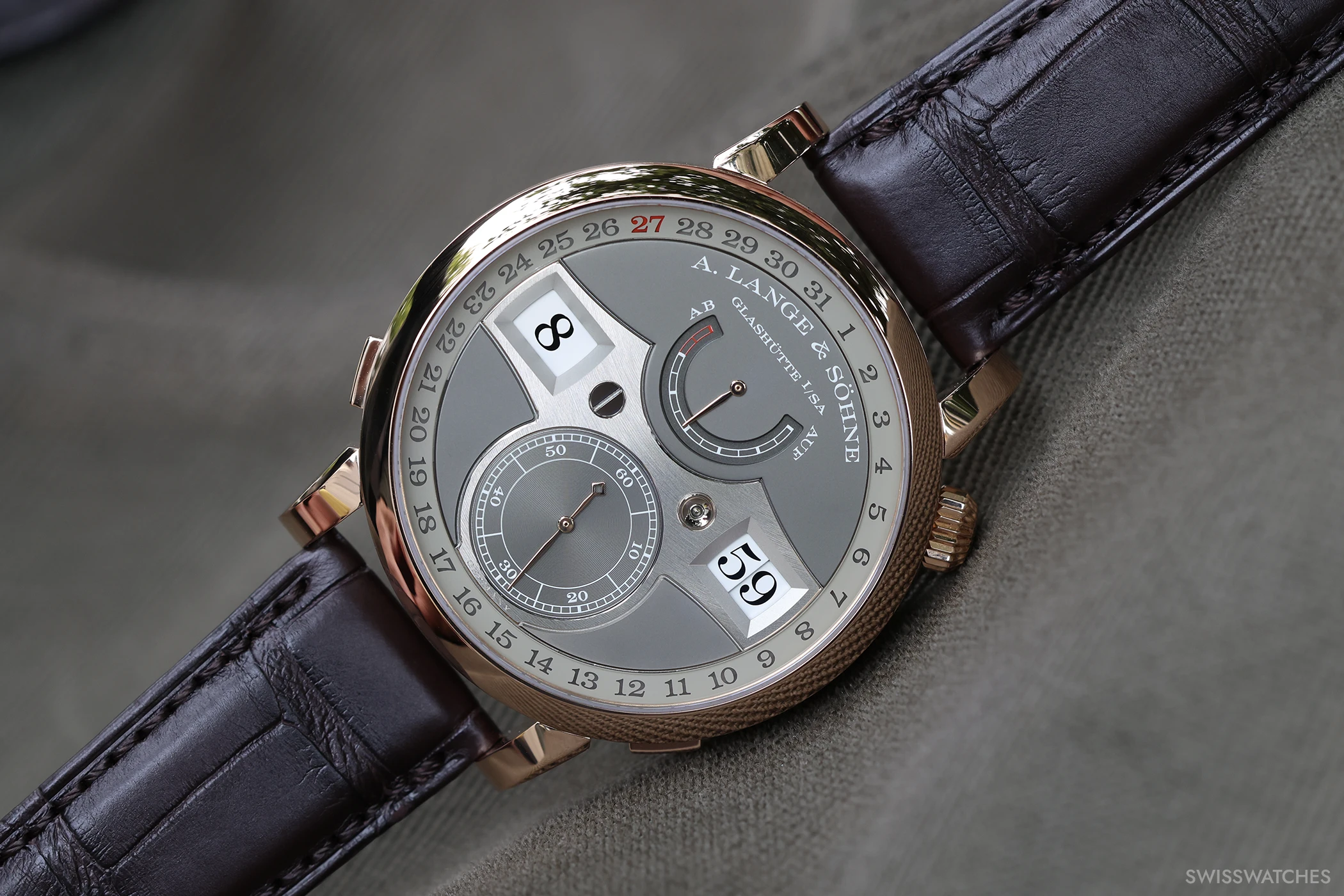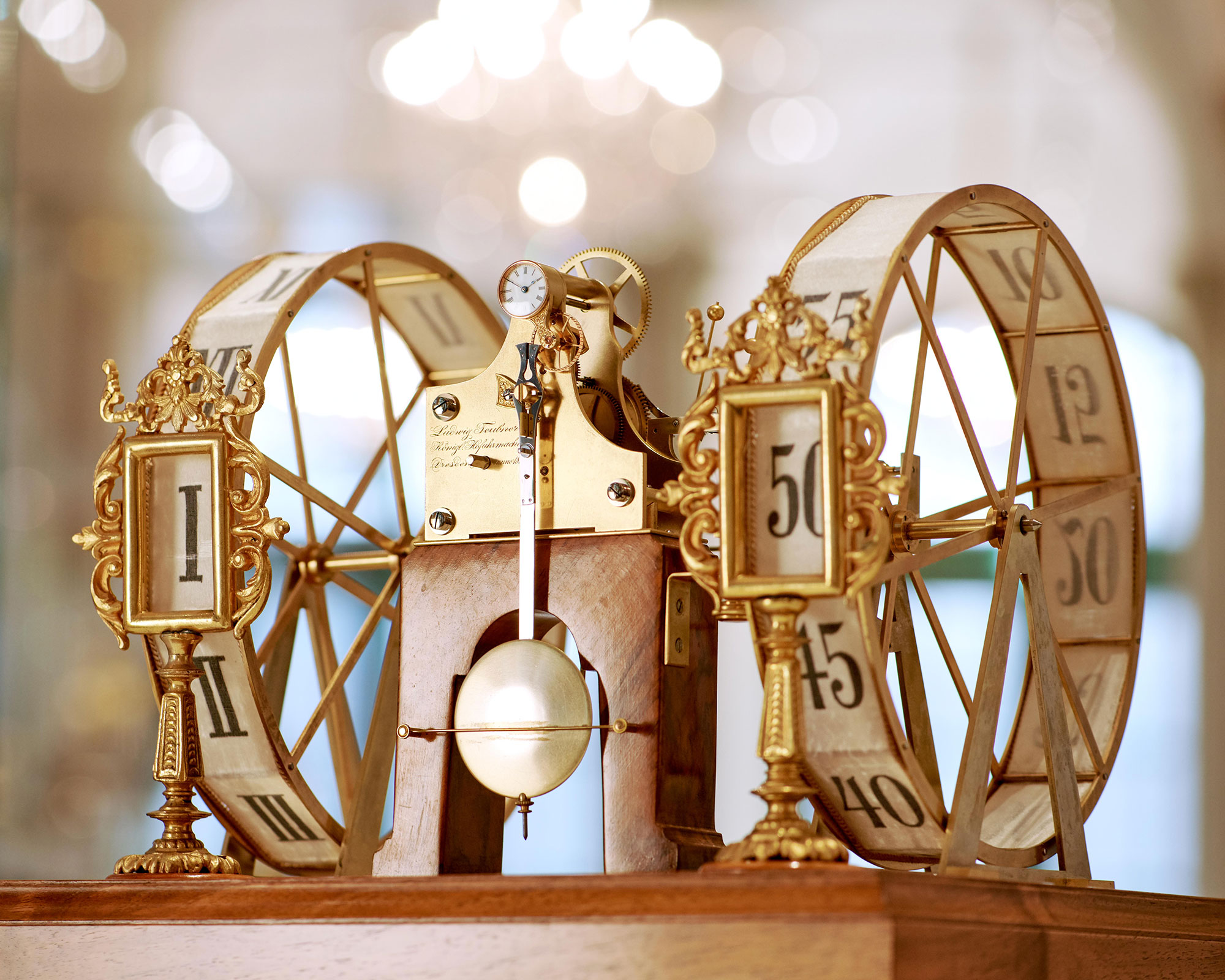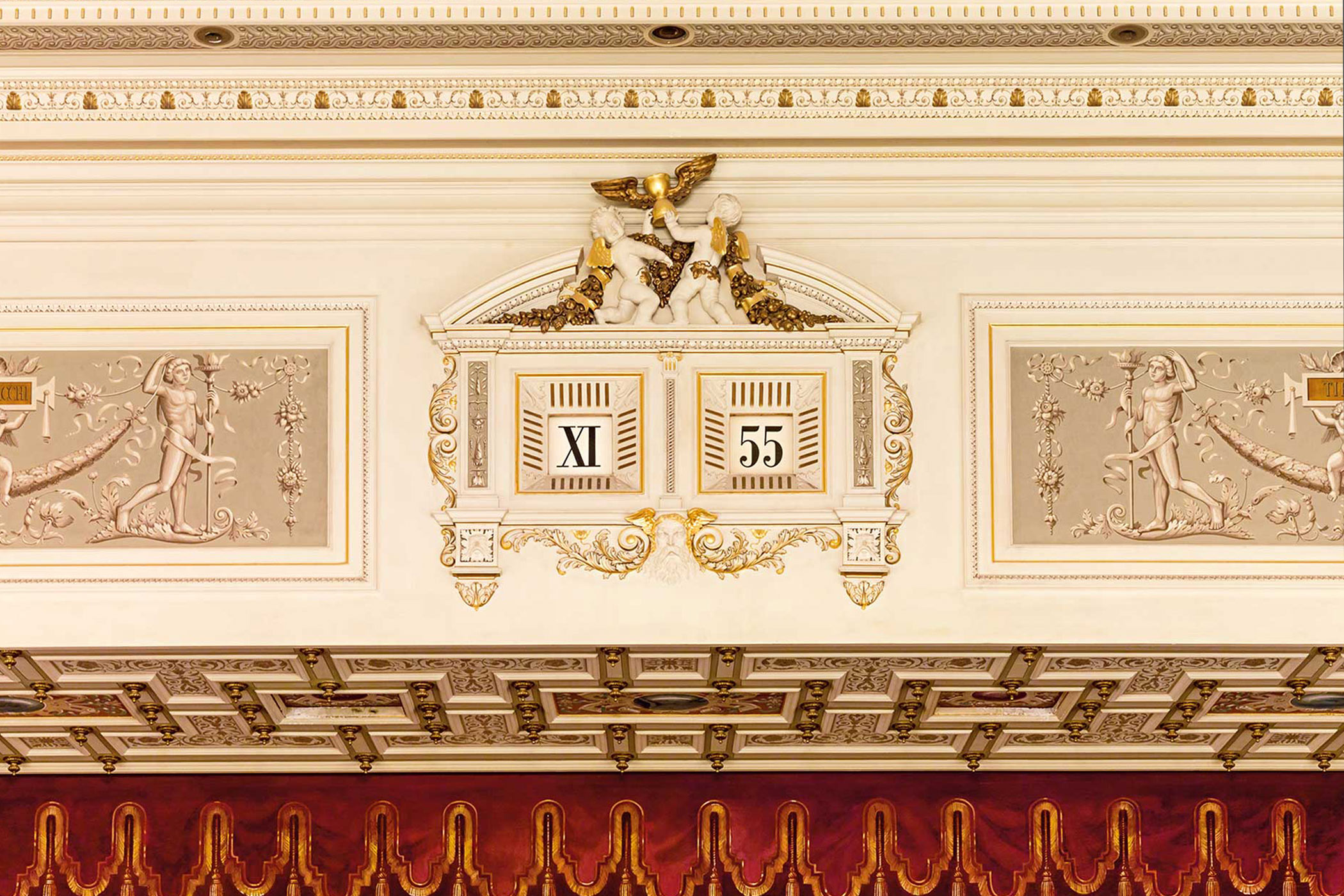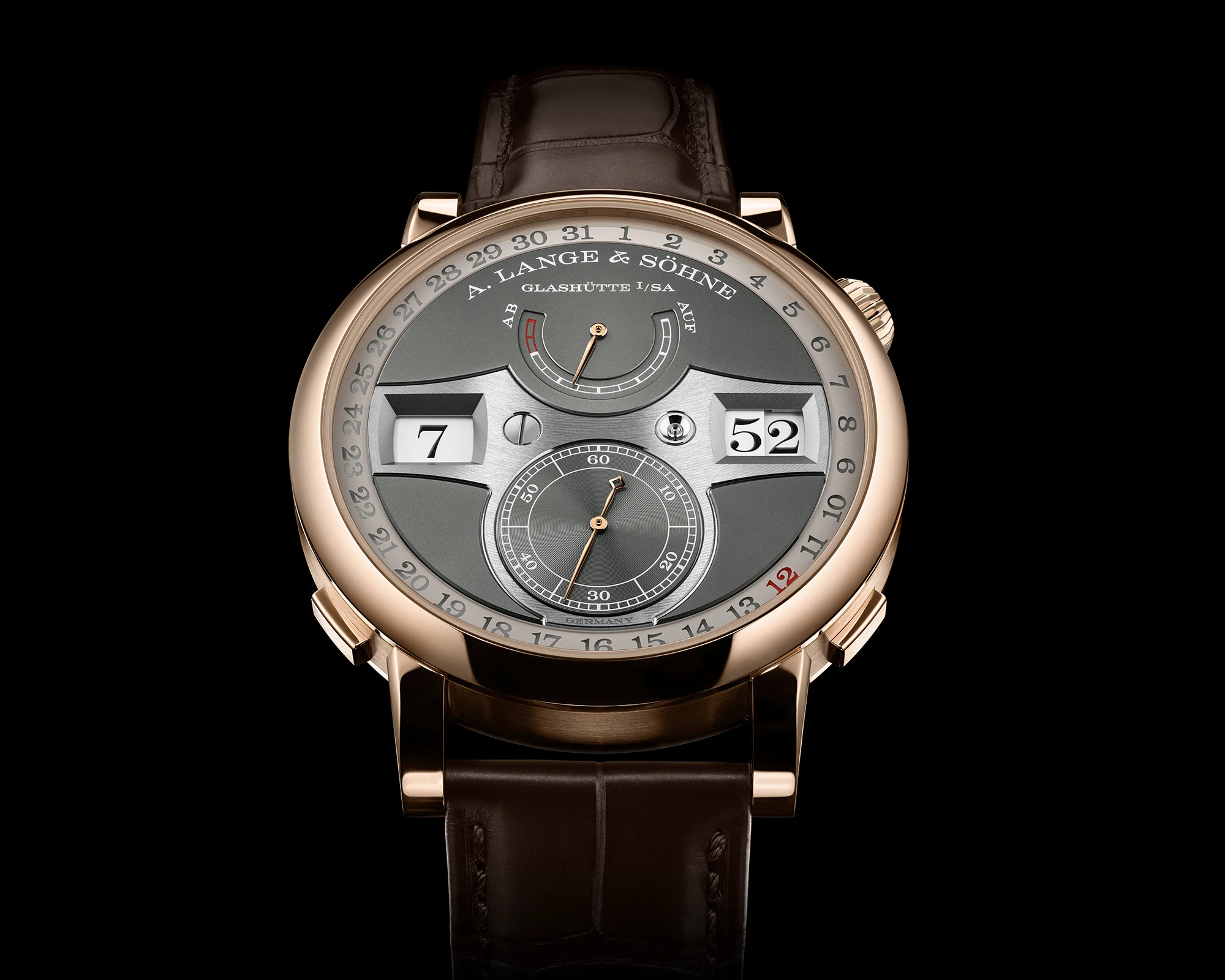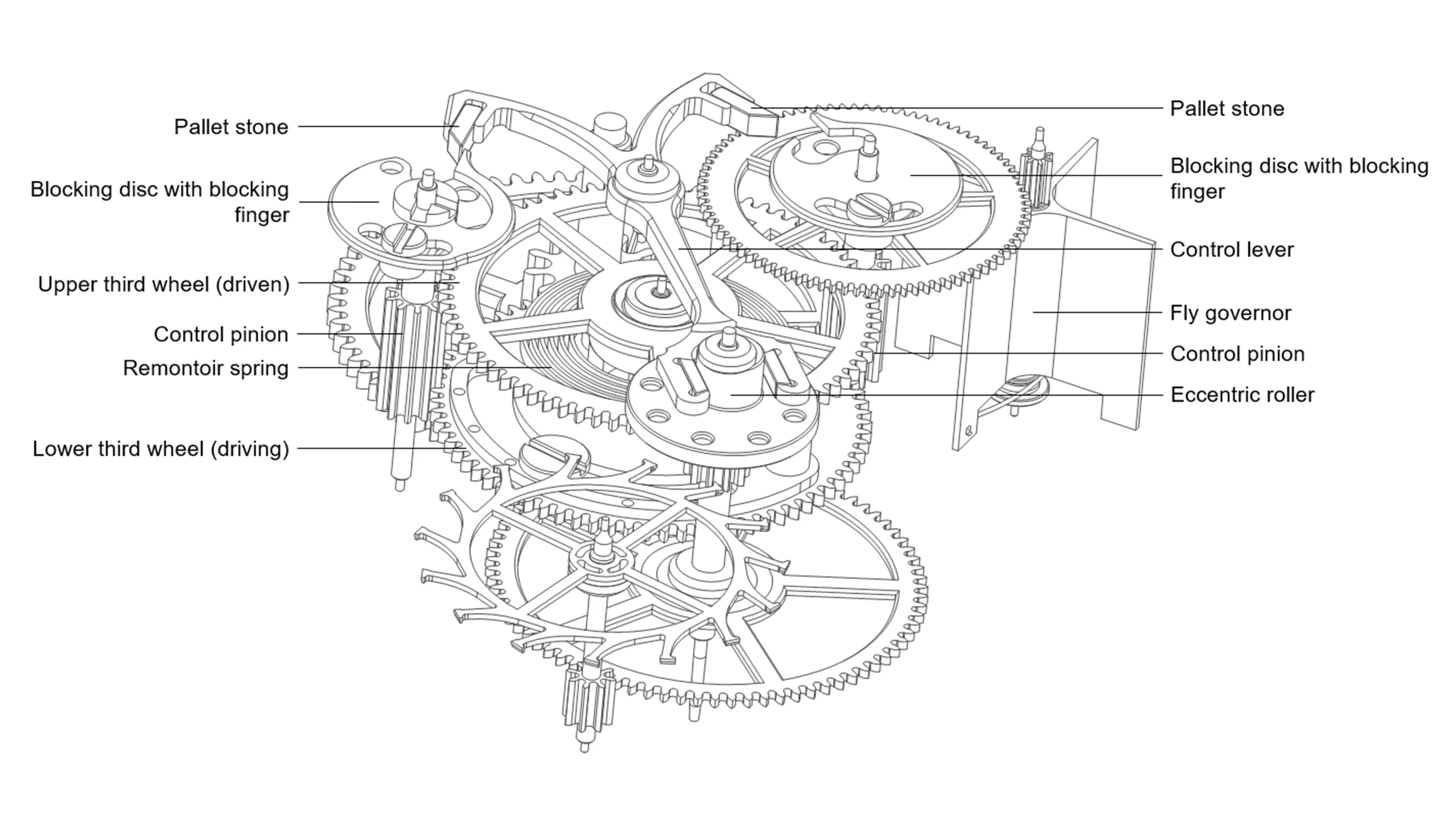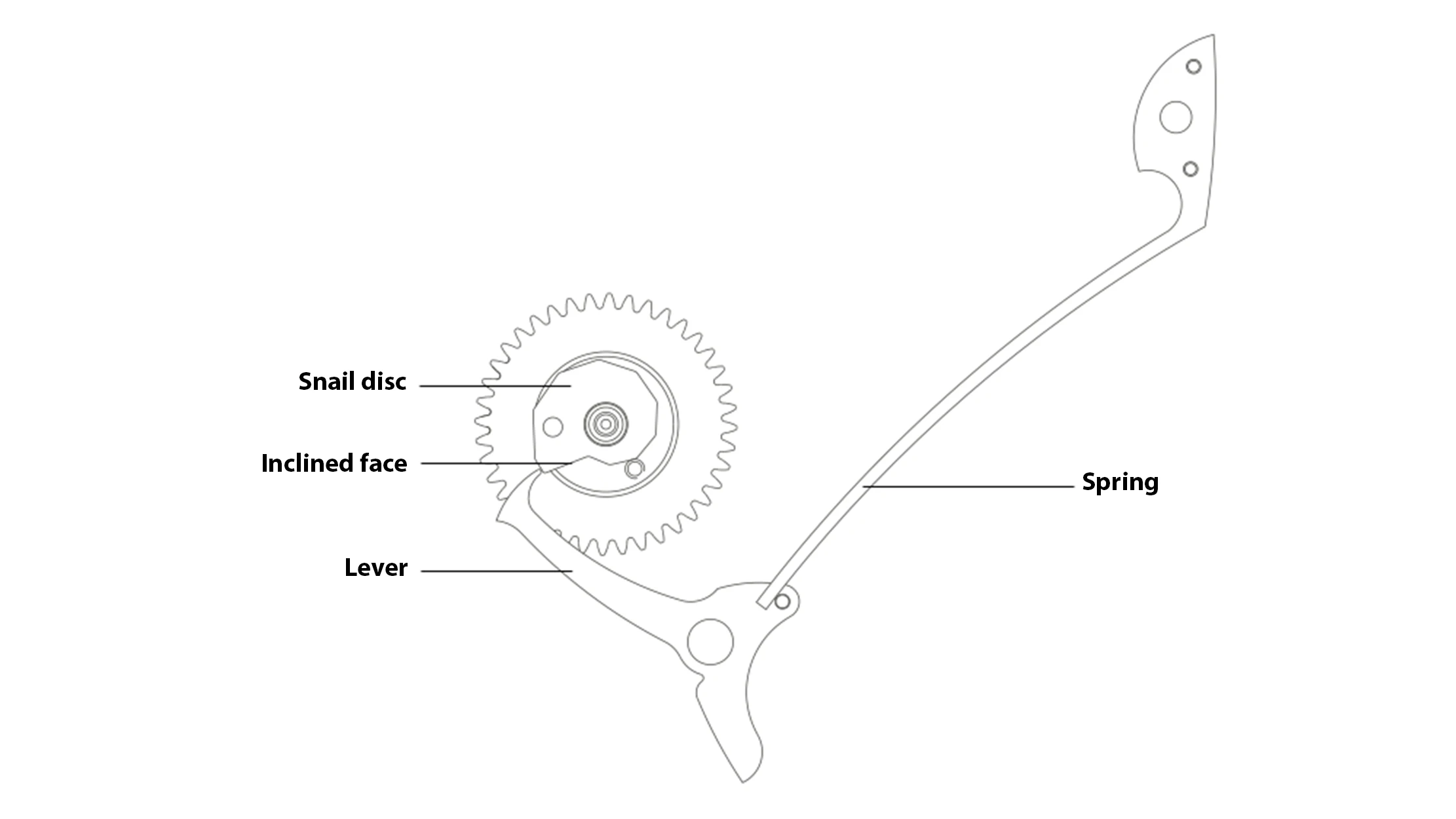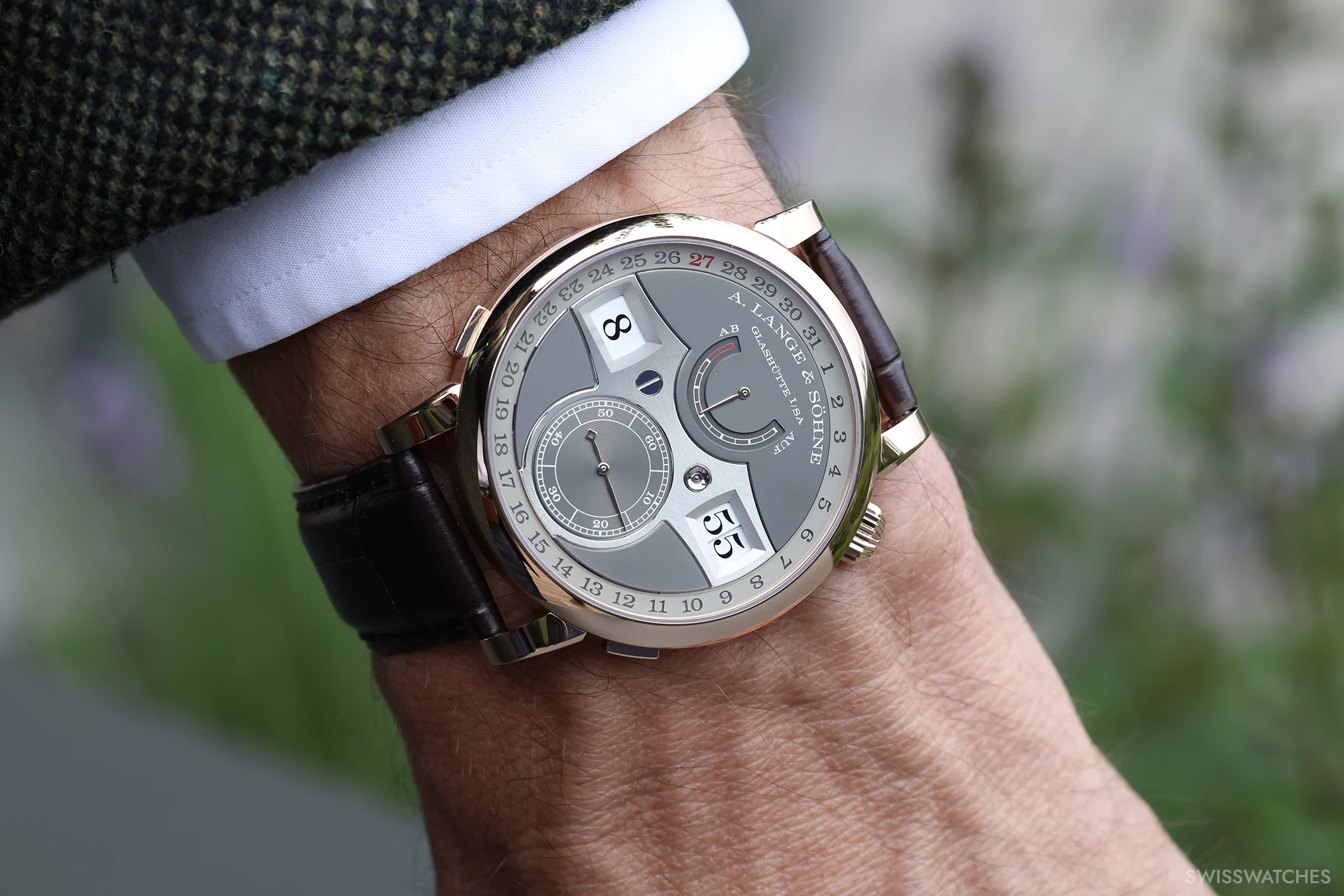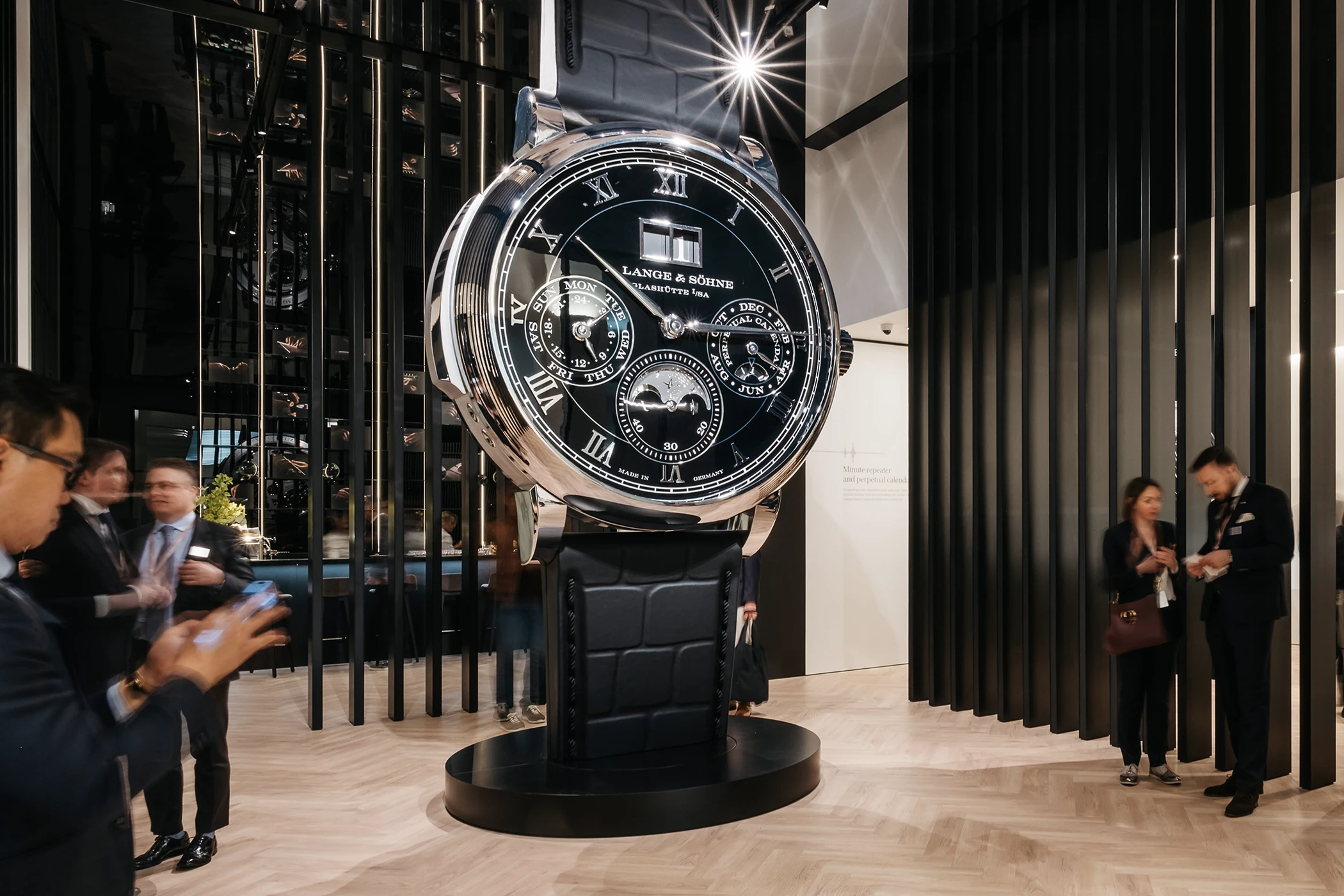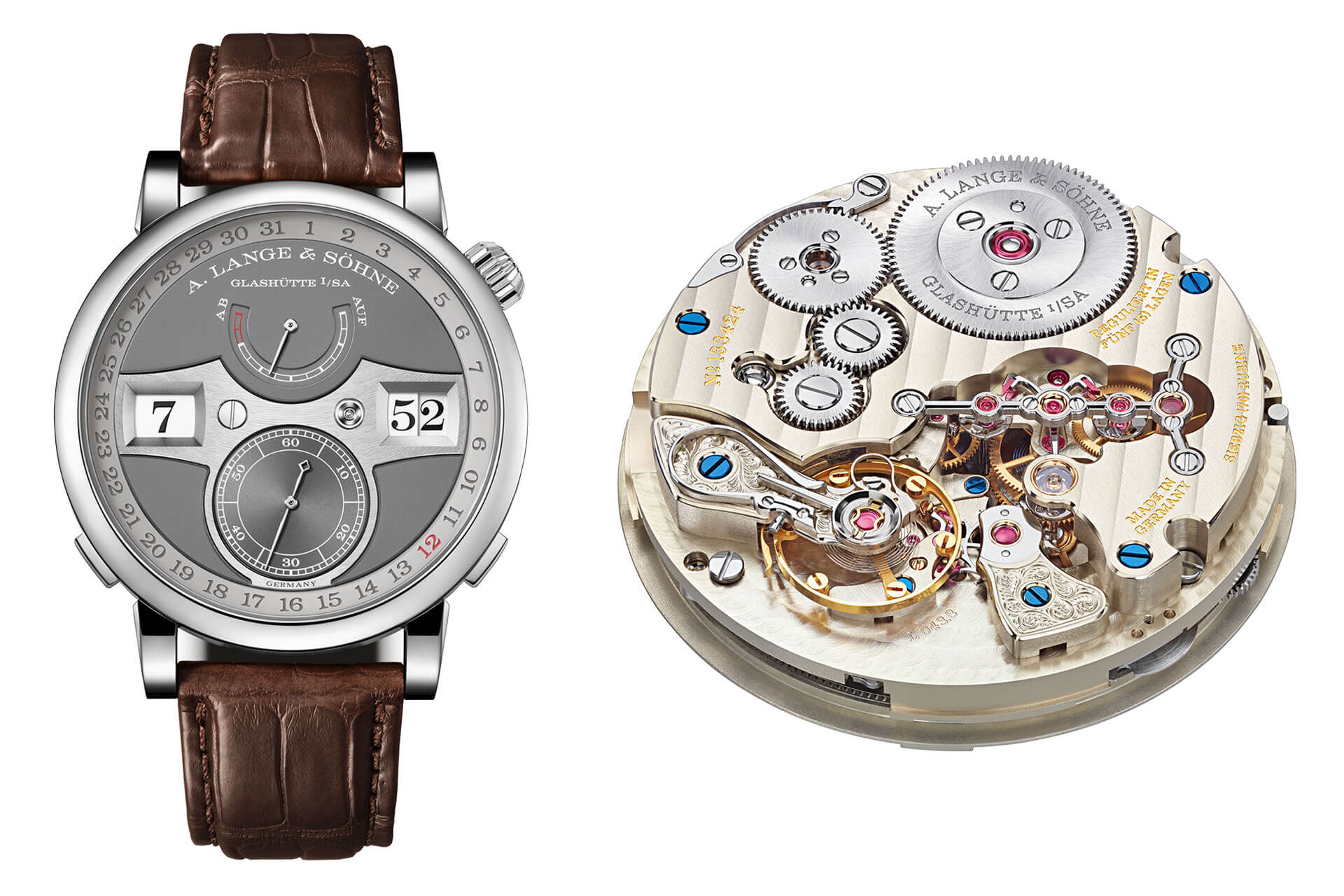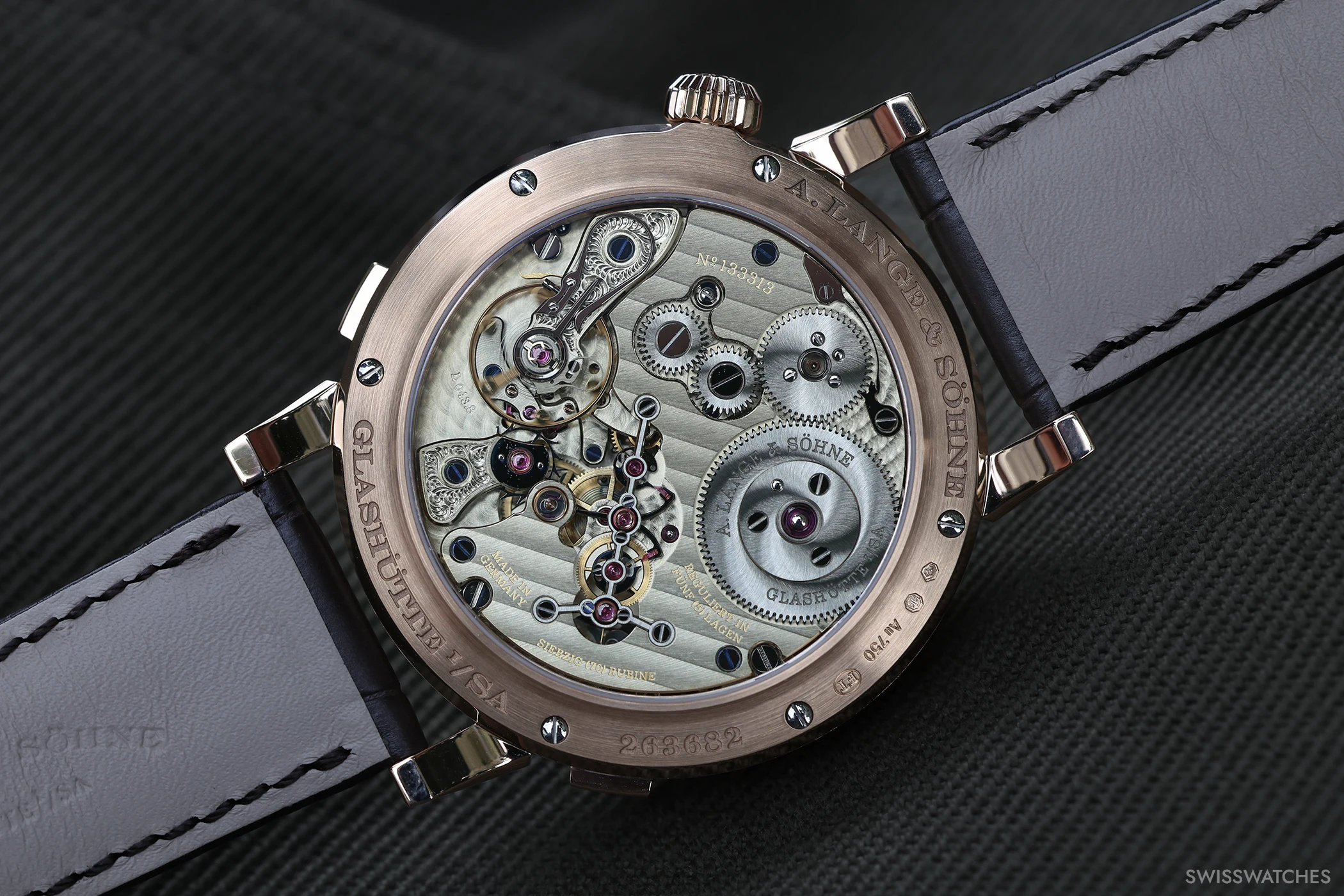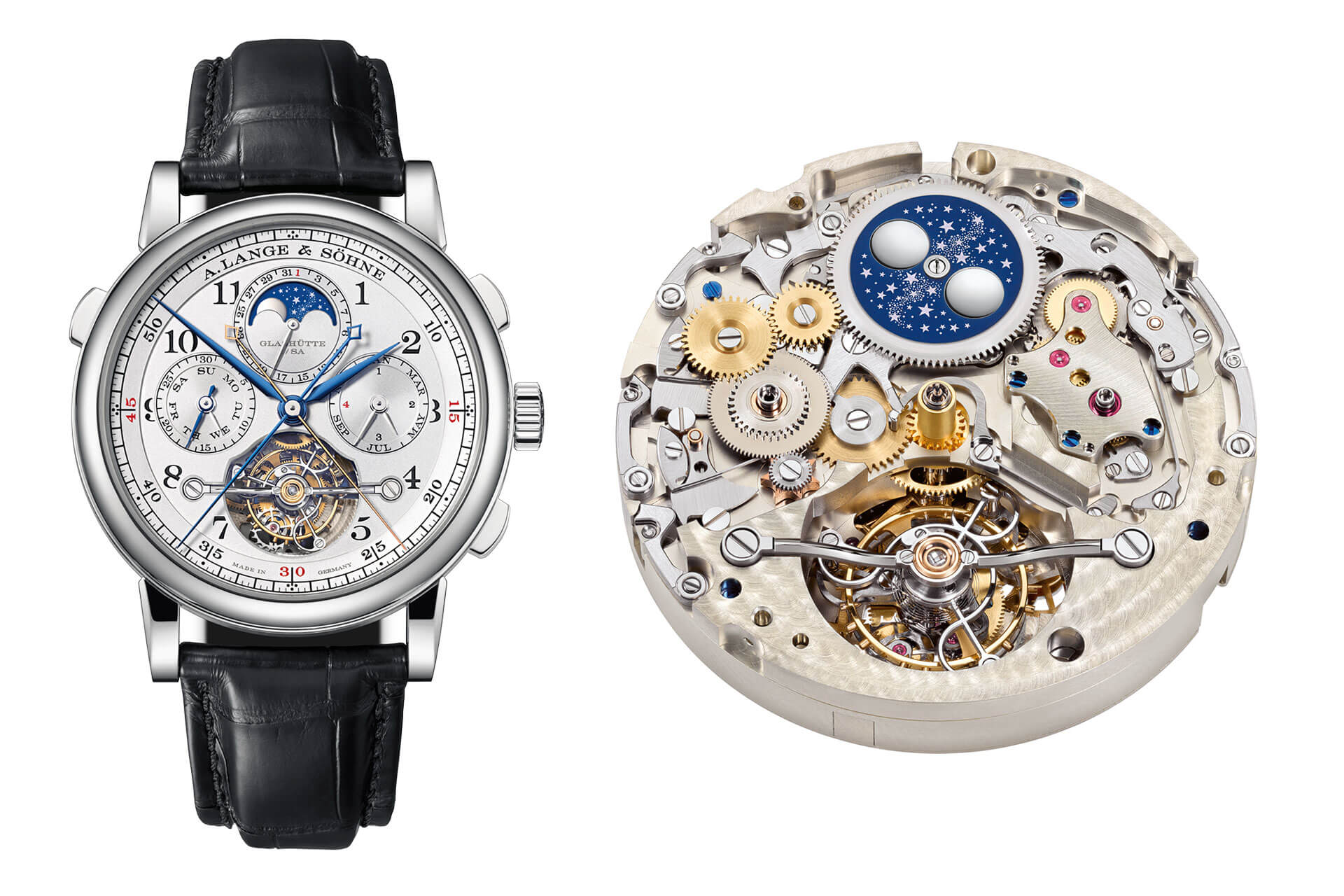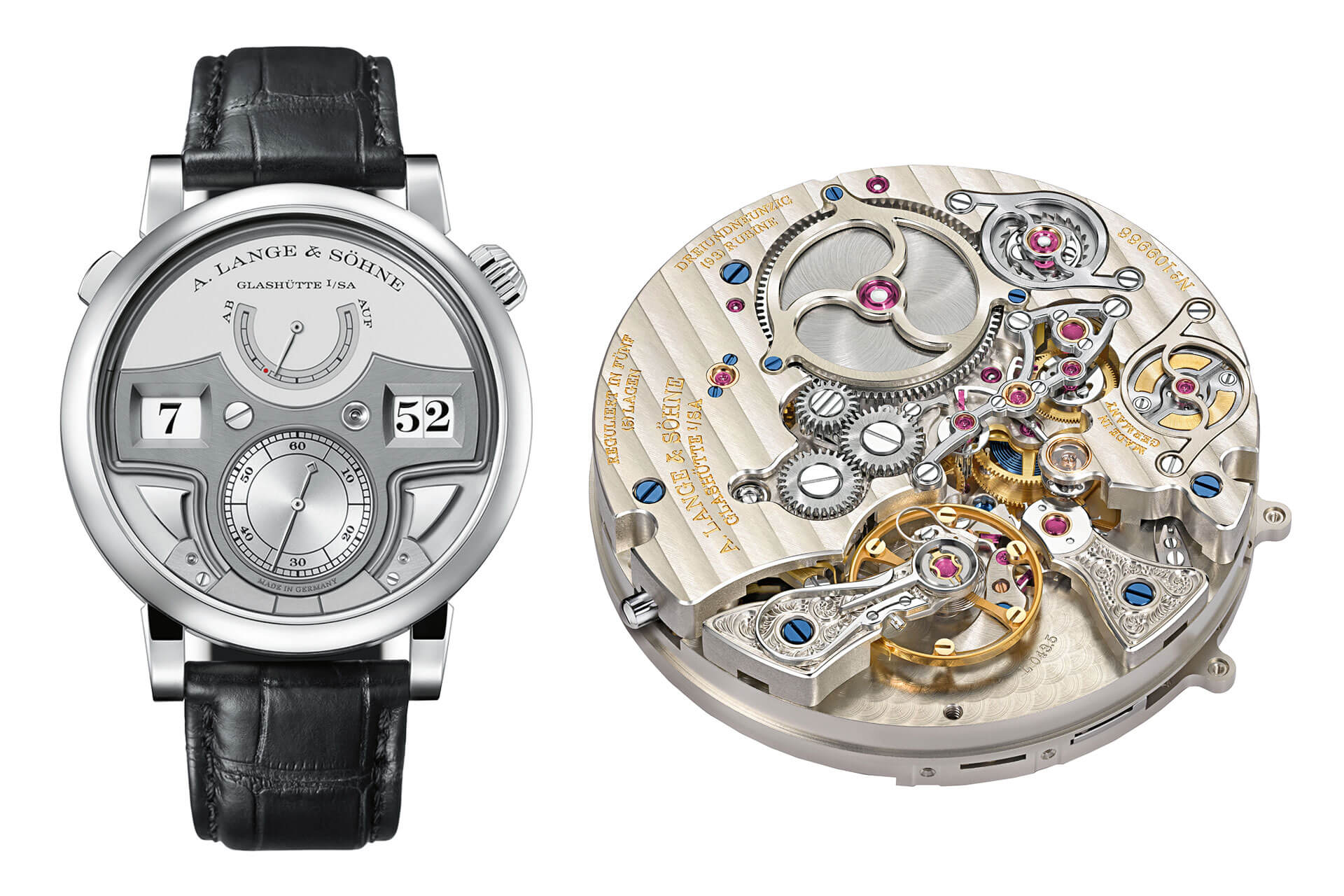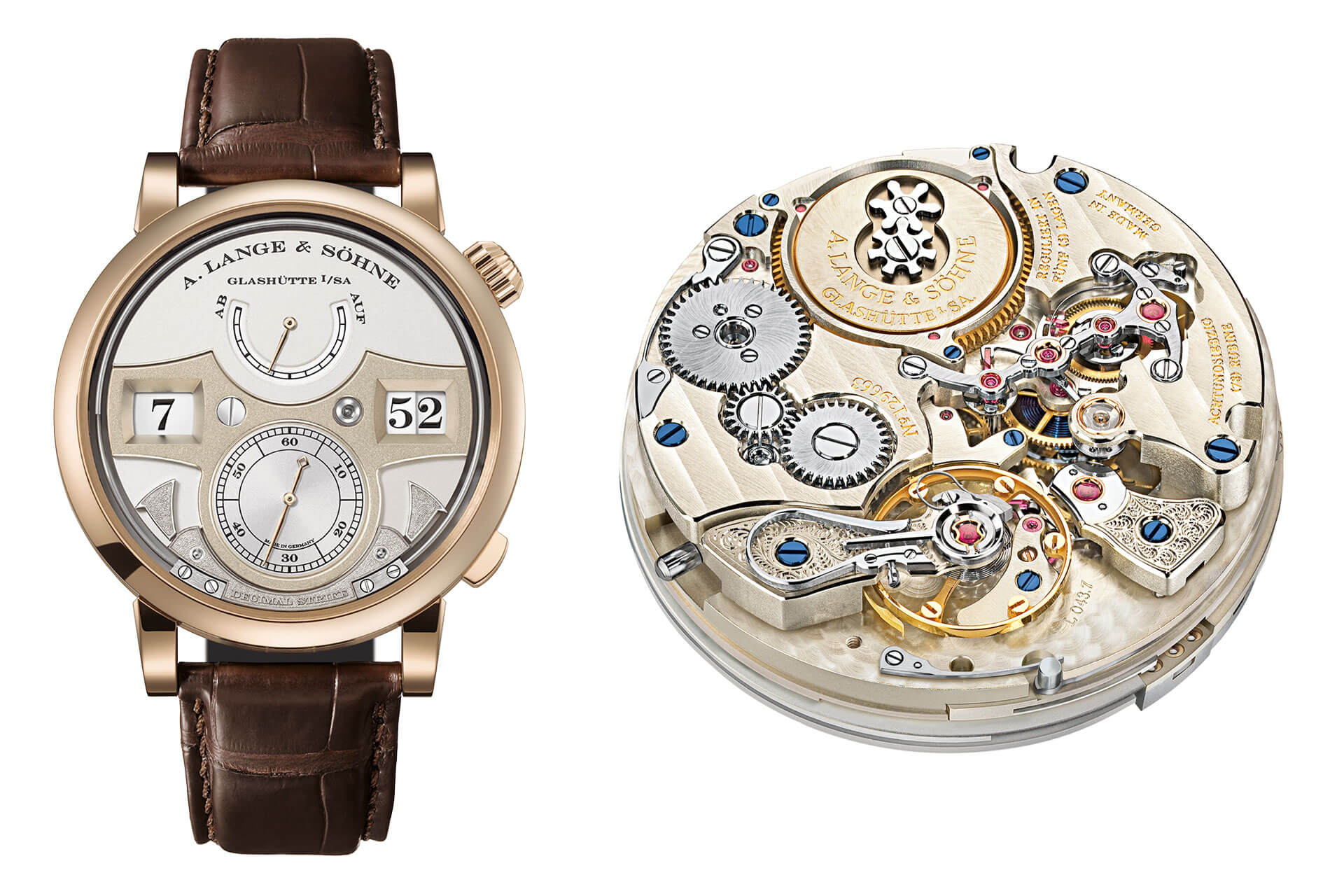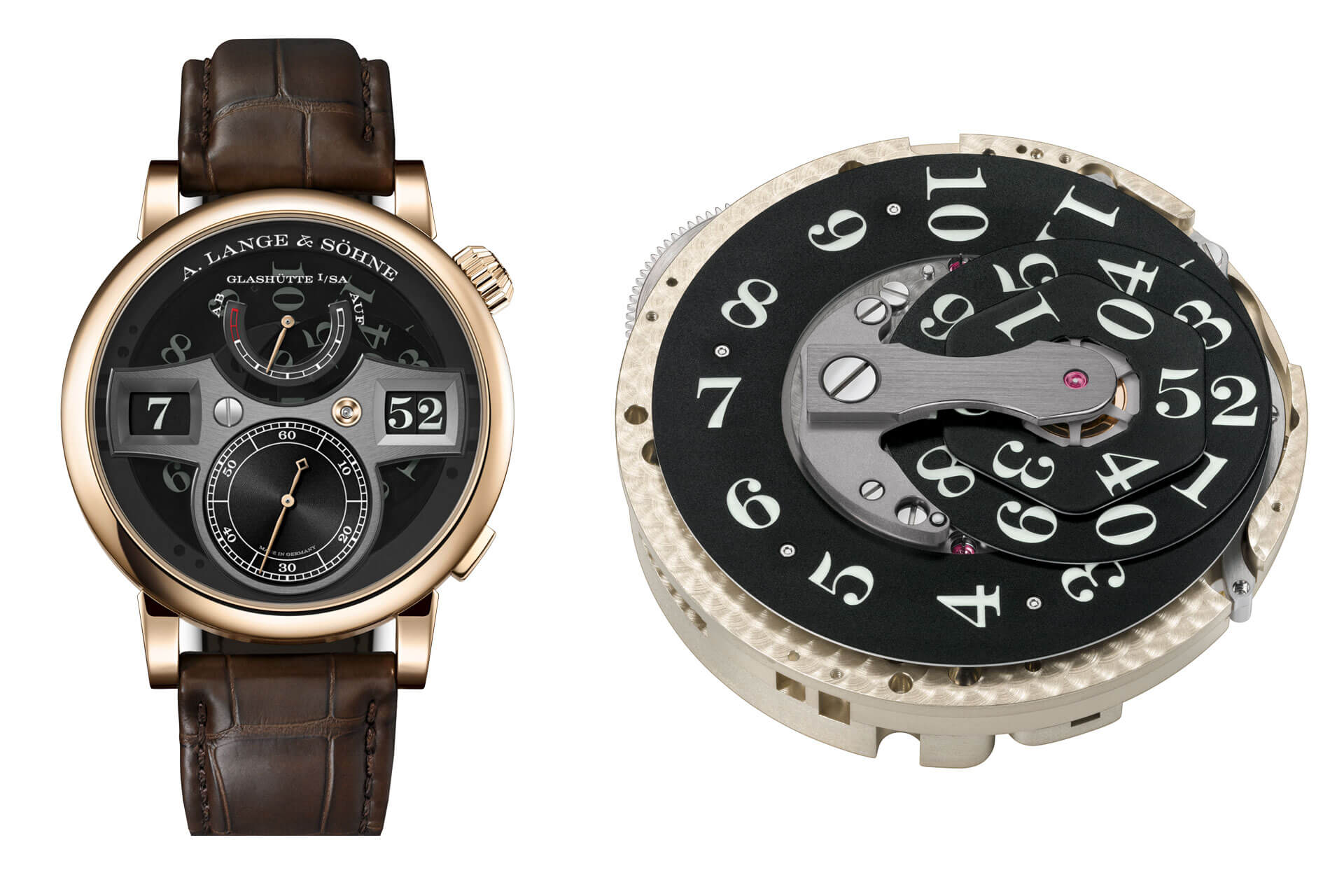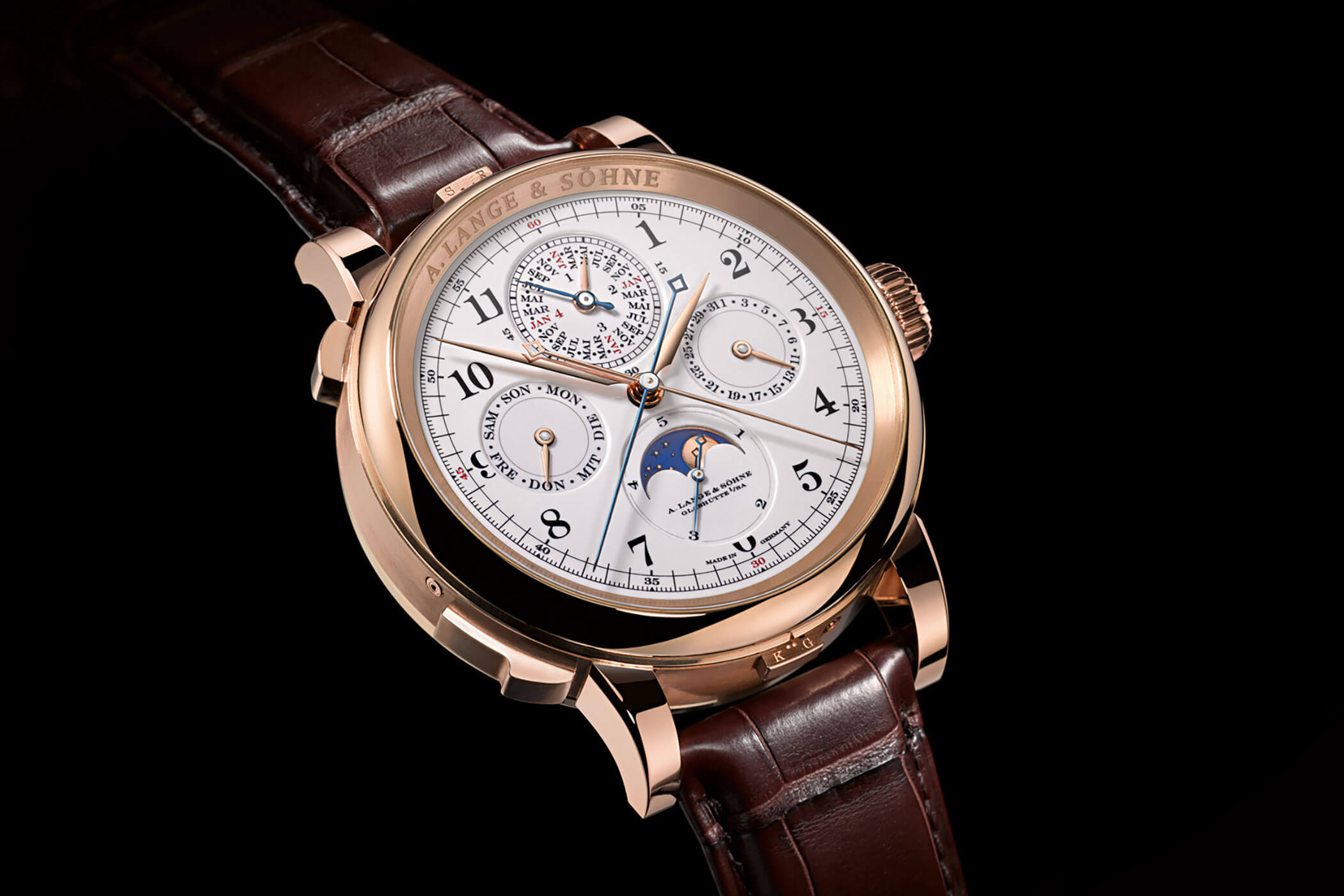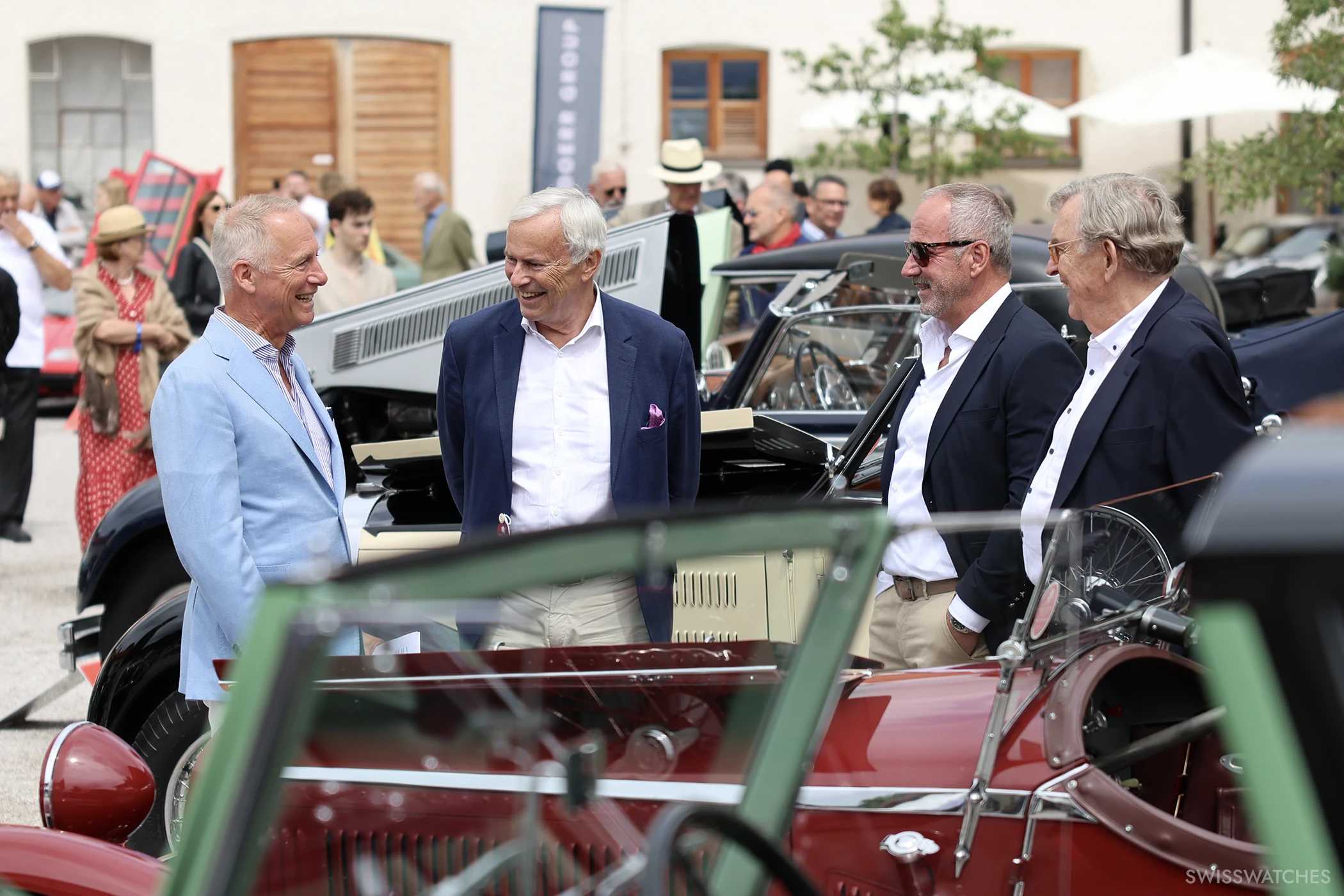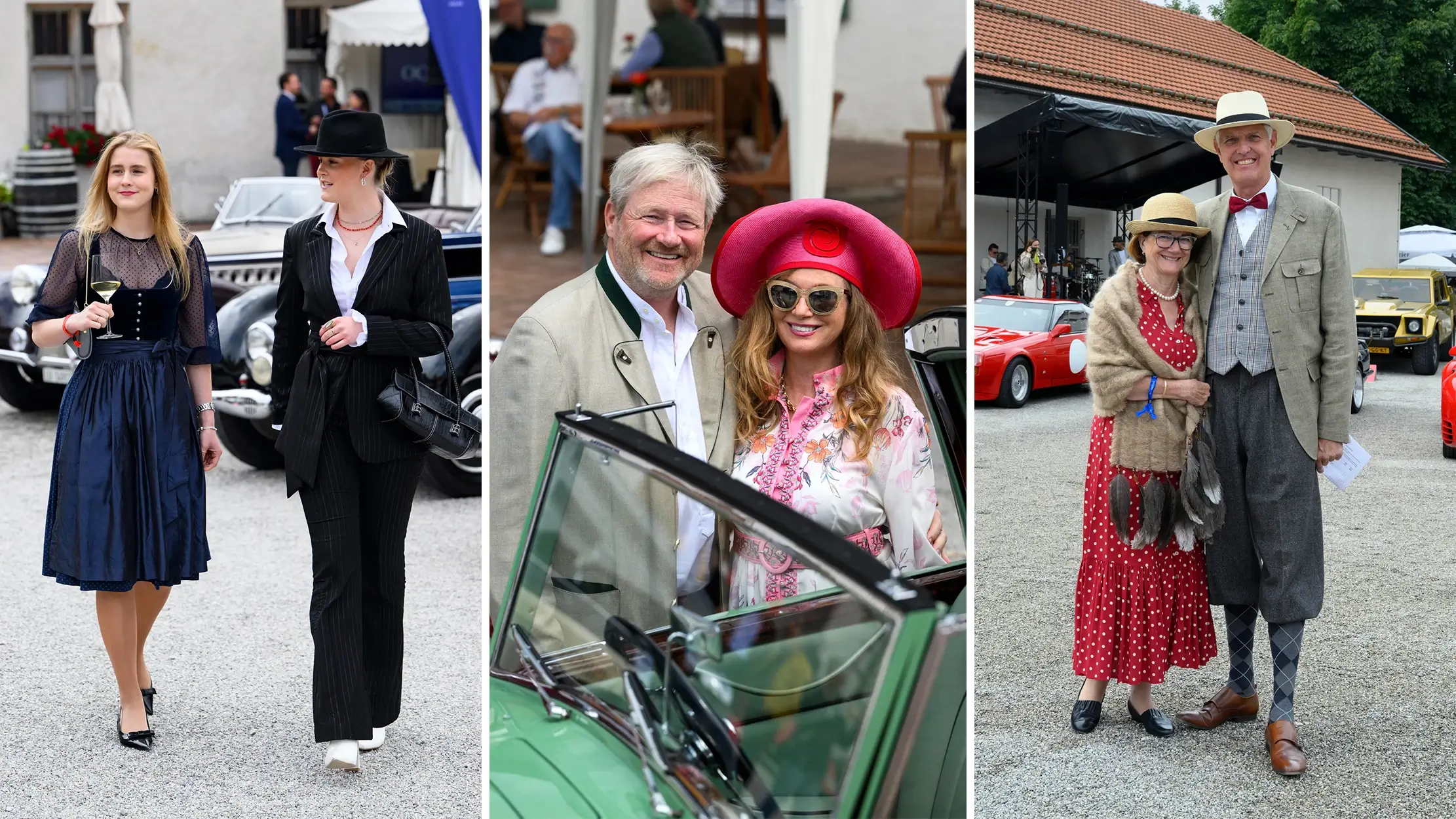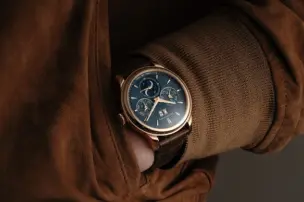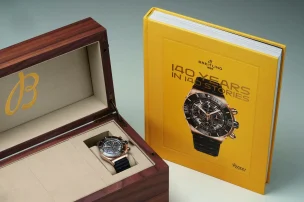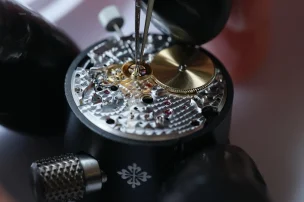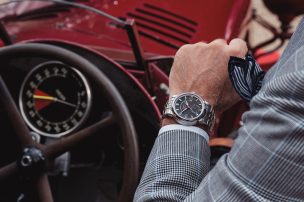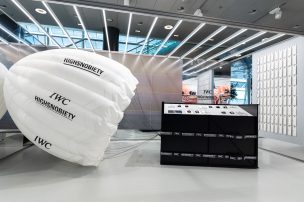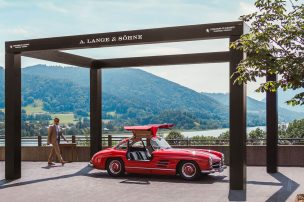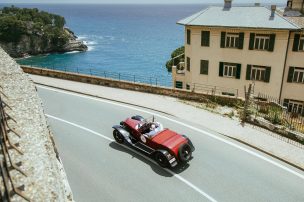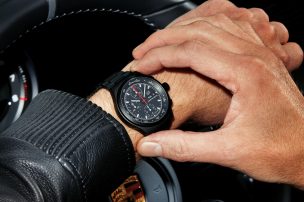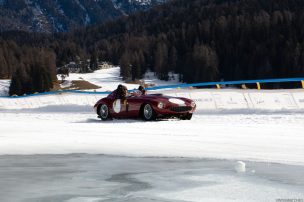
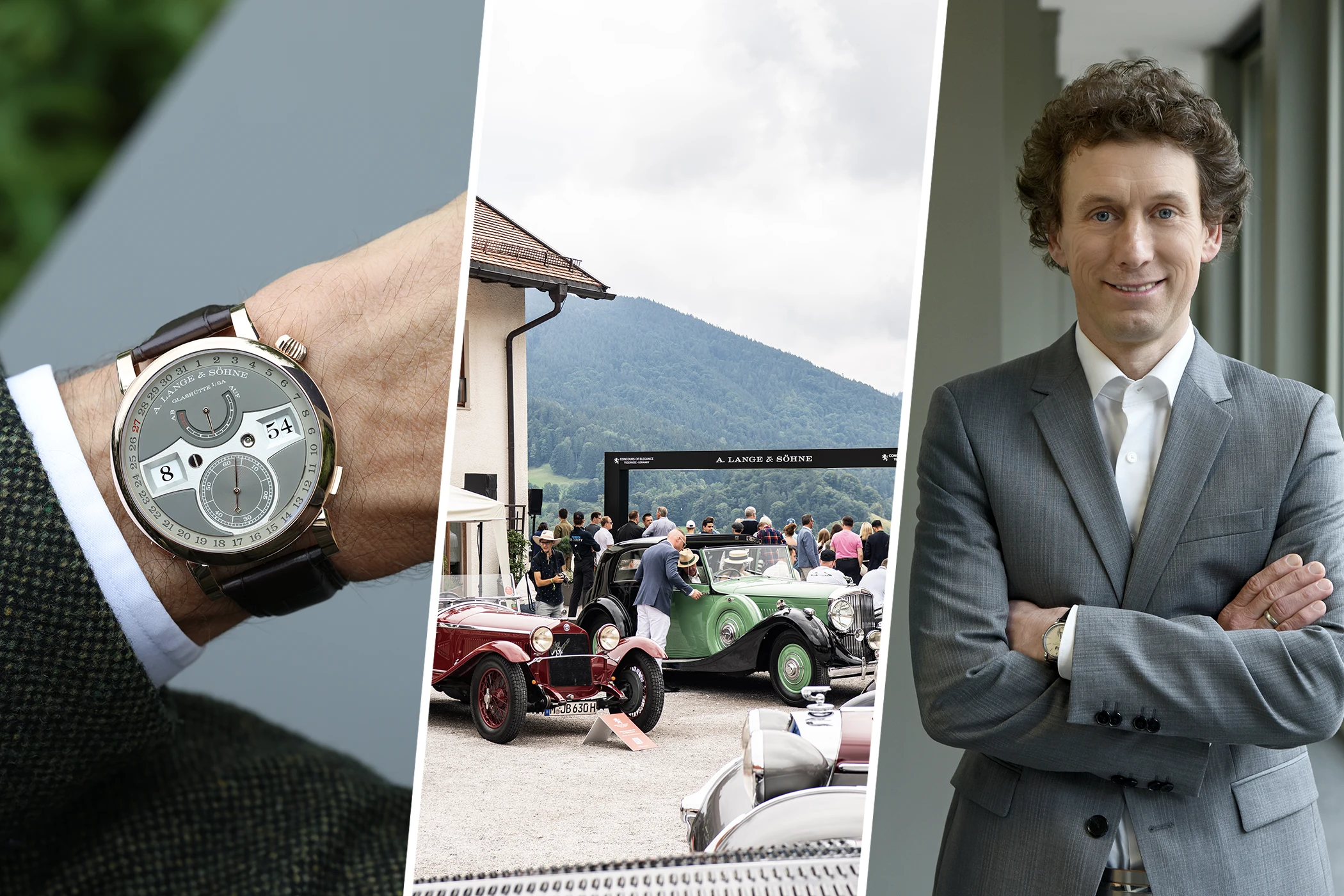
Concours of Elegance Germany: A Conversation With A. Lange & Söhne Production Manager Tino Bobe About The New Zeitwerk Date
In Germany, automotive culture is seen as nothing less than a symbol of the nation itself, with the car industry reflecting its economic and political realities. It is all the more striking that, until recently, collectors and enthusiasts in search of truly prestigious, internationally significant concours events were pointed to Lake Como, Pebble Beach, or England—while a look within their own country proved fruitless. This changed with the organisers of the British Concours of Elegance at Hampton Court Palace – supported by A. Lange & Söhne as main sponsor since 2018 – and their decision to bring the Concours of Elegance to Germany. The formula for the German edition, first held last year, remains the same: to showcase the finest, predominantly historic automobiles in a first-class setting. The German Concours of Elegance found its stage at Gut Kaltenbrunn on the shores of Lake Tegernsee, where the courtyards were once again transformed into a veritable open-air museum during the second edition of the event.
Yet the Alpine foreland provides not only the ideal stage for presenting the allure of classic cars to guests – A. Lange & Söhne also takes the opportunity to immerse visitors in the intricacies of watchmaking. Beyond acting as a presentation partner and sponsor of selected classes, the manufacture also presents a curated selection of timepieces across two dedicated areas. On the opening day, the brand unveiled another highlight: the new Zeitwerk Date in pink gold. On the occasion of this launch, we met with Lange’s Production Director Tino Bobe on the sidelines of the Concours to learn more about the exceptional functionality of the Zeitwerk Date, and to discuss the significance of this model for the brand.
The Second Concours of Elegance Germany
The second edition of the Concours of Elegance Germany took place on Friday 25 and Saturday 26 July at Gut Kaltenbrunn – a listed four-winged estate dating back to the 14th century, situated on the northern shore of Lake Tegernsee in Gmund. This year, more than 80 rare automobiles, with a combined estimated value of around 95 million euros, gathered here and transformed the former royal estate’s courtyards into an open-air museum infused with motorsport spirit for two days. The Concours of Elegance Germany is by no means just a horsepower display catering to superficial showmanship. Rather, each concours class celebrates the very passions that thrilled motorsport enthusiasts 50, 60, or even 100 years ago.
To contend for class victories, collectors journeyed from around the world to Lake Tegernsee – unveiling the finest treasures from their collections and putting their six-, eight- and twelve-cylinder masterpieces through their paces. The automobiles were assessed first at a standstill and later in motion, judged on design, condition, originality, and elegance. What makes the German concours particularly distinctive: the class winners are not chosen by a conventional jury, but by the participants themselves. Running through the event as a unifying theme was the so-called ‘decade class’, in which collectors presented cars from the 1920s, 1940s, 1980s and beyond.
Credit © Tim Scott/Fluid Images
Among the highlights was a 1929 Mercedes-Benz 710 SS Roadster by Corsica, which triumphed in the 1920s class. Its success is easily explained: one of only 111 examples ever built of the SS model (‘Super Sports’), it is regarded as one of Mercedes-Benz’s most important pre-war sports cars, capable of delivering an impressive 300 hp from its vast 7,065 cc engine when the supercharger is fully engaged.
Credit © Tim Scott/Fluid Images
The 1960s class was won by a 1960 Maserati 3500 GT Convertible by Vignale. Produced by the Italian marque from 1957 to 1966 (later in GTI form), the Maserati 3500 GT marked a turning point: for the first time, Maserati ventured into series production of sports cars designed for the road – whereas its earlier models had been largely competition-focused one-offs.
Credit © Tim Scott/Fluid Images
In the category ‘The Best 1970s Cars’, victory went to a 1976 Lamborghini Countach LP 400, a car that still epitomises what luxury, exclusivity, and radical design meant to motorsport aficionados of the 1970s. The design philosophy is most evident in the wedge-shaped front end, which flows almost seamlessly into the steeply raked windscreen, forming a line with the low, tapering roof and culminating in the sharp angles of the flanks and rear. Distinctive features such as the first upward-opening scissor doors and the V12 engine reinforced its image as the ultimate ‘poster car’ of its era, laying the foundation for characteristics that continue to define the allure of many Lamborghinis today.
Credit © Tim Scott/Fluid Images
In the Formula 1 class, racing machines of the past took to the stage, evoking defining eras of motorsport. Class victory went to an Alfa Romeo P3 – one of only 13 ever built, originally campaigned by Scuderia Ferrari – while second place was awarded to a Ferrari 312 T5 from 1980, once driven by Gilles Villeneuve during the Formula 1 season of that year.
Credit © Tim Scott/Fluid Images
Why the Partnership Between A. Lange & Söhne and the Concours of Elegance Germany Works so Well – and the Role the Brand Plays
The reason why the connection between Lange and the Concours of Elegance Germany resonates so strongly is clear: through its sponsored classes and awards, the manufacture honours the countless hours invested in preserving historic automobiles, while simultaneously demonstrating an appreciation for traditional craftsmanship and a commitment to safeguarding it – qualities inherent not only to combustion engines but also to mechanical watch movements.
To embody this ethos, the brand and its CEO Wilhelm Schmid do more than merely serve as a presentation partner; they extend their presence across both the event grounds and its programme. At the grand finale of the concours, Wilhelm Schmid personally presented the Best of Show trophy to the owner of the winning vehicle. This year an Austro-Daimler Bergmeister from 1932, a pre-war Austrian cabriolet, secured the prestigious prize sponsored by Lange.
Credit © Tim Scott/Fluid Images
Another highlight was the new Emerging Collectors Concours, also sponsored by Lange. This initiative offers up-and-coming collectors under the age of 35 the chance to showcase their car on the concours stage and compete not only within their category but also for the overall Emerging Collectors title. Here, too, Wilhelm Schmid personally handed over the award – in this case to the owner of a 1978 Porsche 911 Turbo 3.3 Litre Ex-Press Car.
Credit © Tim Scott/Fluid Images
Schmid’s passion for classic motorsport was evident firsthand: he personally entered the concours and took victory in the 1950s decade class with his own 1956 AC Ace Bristol.
Credit © Tim Scott/Fluid Images
For those seeking a break from the automotive spectacle, Lange’s stand and a separate presentation area overlooking Lake Tegernsee offered a closer glimpse at the brand’s timepieces and their intricate mechanics. Yet, the centrepiece of this strategic partnership was the unveiling of a new watch on the opening day of the concours: the A. Lange & Söhne Zeitwerk Date in pink gold. This new Zeitwerk variant was showcased at the main stand – in an oversized display reminiscent of the brand’s Watches & Wonders booth – ensuring all eyes were drawn to it. The Zeitwerk as a whole, and the Zeitwerk Date in particular, boast a remarkable origin story and mechanical concept – which we were able to explore in greater depth at the event itself.
The Zeitwerk Date and Its Technical Distinctions
The Zeitwerk Date represents a logical evolution of the Zeitwerk model first introduced in 2009. Today, the collection includes versions with luminous elements, models with acoustic time indications – and, since 2019, with the Zeitwerk Date, also a date display.
With the Zeitwerk, A. Lange & Söhne combined a wristwatch with the concept of a digital display inspired by a much earlier predecessor, the stage clock of the Dresden Opera House, for the first time. The dominant digital display on the Zeitwerk’s dial can be traced back to the late 1830s, when court clockmaker Johann Christian Friedrich Gutkaes was commissioned to build a clock to be positioned above the stage, ensuring legibility even from the back row. Together with his assistant Ferdinand Adolph Lange – later the founder of the Glashütte manufactory – he created the five-minute clock, featuring two windows: the left displaying the hours in Roman numerals, the right showing the minutes in five-minute intervals (5 to 55) in Arabic numerals. The clock was completed in 1841.
A. Lange & Söhne adopted this five-minute clock concept and carried it forward with the Zeitwerk: hours and minutes appear in equally sized windows, aligned along a horizontal axis. Not only the hours but also the minutes – displayed via two discs – jump instantaneously. To achieve this, the watchmakers developed a jumping numeral mechanism composed of three discs. For optimal legibility, the equally large hour and minute displays are arranged in a straight line: the minutes are indicated by two discs, one for units (0–9) and one for tens (0–5), both mounted on a common axis.
To realise the concept of jumping minute discs – a challenge no other brand had mastered due to the immense energy required – Lange developed a remontoir positioned between the mainspring barrel and the balance. This stores energy for the precise, instantaneous advancement of the numeral discs at each minute and releases it evenly. As a result, the torque remains constant throughout the entire power reserve, significantly improving rate stability. This is especially important as the Zeitwerk calibres rely on an unusually strong mainspring with a steeply declining torque curve.
In 2019, marking the tenth anniversary of the Zeitwerk, the Zeitwerk Date was introduced into the collection with the newly developed hand-wound calibre L043.8 – a step that felt more like a revolution than an evolution. Key to this was a patented energy-storage mechanism, which accumulates small amounts of energy at each minute jump and releases them specifically for the more energy-intensive switching actions of the tens, hours and date discs – particularly at midnight. This innovation ensured that the required force was more evenly distributed, avoiding peak loads. Together with the remontoir and the energy-storage device, these advancements provided sufficient energy to double the power reserve from 36 hours in previous Zeitwerk models to 72 hours.
Equally significant is the date indication, positioned around the periphery of the dial to frame its inner workings. The date ring consists of printed glass with numerals from 1 to 31. Beneath it lies a small coloured segment on an underlying ring, which advances one step precisely at midnight each day, making a complete circuit of the dial over the course of a month.
On 25 July, the collection was expanded: alongside the existing white gold version with light grey dial, a new pink gold model with dark grey dial was introduced. Despite the complexity of its movement, the watch remains relatively slender, with a 44.2 mm case diameter and a height of just 12.3 mm. The retail price is around 130,000 euros.
A. Lange & Söhne Production Director Tino Bobe on the Zeitwerk, Innovation and the Concours of Elegance
With the Zeitwerk, A. Lange & Söhne drew upon the historic concept of the Dresden Opera’s five-minute clock and adapted it into a wearable timepiece. Yet the step from a stage clock to a wristwatch posed considerable technical challenges; challenges that in turn led to a series of remarkable innovations. At the Concours of Elegance on Lake Tegernsee, we spoke with Tino Bobe about these developments and their significance. Bobe, who has been with A. Lange & Söhne since 1999 and now serves as Production Director of the Glashütte manufacture, has played a key role in the brand’s groundbreaking innovations over the years. During our conversation, he shared insights into the origins of the Zeitwerk models, their importance within the product portfolio, their potential for the future – and the special connection between A. Lange & Söhne and the Concours of Elegance Germany.
At your stand at this year’s Watches and Wonders, an oversized Minute Repeater Perpetual immediately caught the eye. How are these giant watches created – and are they also made in Germany?
Yes, they are indeed made in Germany, in fact not far from Glashütte. Over the years, we have built up a collaboration with a small craft workshop that has increasingly specialised in this work. Internally, we could never manage all of it on our own.
For us, it has always been important to make visible what we do and what we love – namely watches. You know how it is at a trade fair: everyone tries to draw attention, often with things that have little to do with the watches themselves. But we are about watches – we live and breathe them. So, it was clear: if we were to stage something, it had to be a watch.
As early as 1999, when we presented the Datograph at the Basel fair, we took a similar approach: back then, we built the movement at a scale of 10:1 in our own toolmaking department and exhibited it at our booth. It was like a magnet – everyone was drawn to it. The same principle lies behind today’s giant watches: we want to showcase the beauty we work on every day, just once on a large scale.
How much preparation time does the workshop need to produce these giant watches?
In essence, it is a year-round process. Once the watch has been dismantled after the fair, the first briefings for the coming year begin just a few weeks later. Then we discuss the direction: which of the new models do we want to present? Which materials should we use? Which functions should also be made tangible on a larger scale?
In earlier years, it was not necessary for these oversized models to actually ‘run’. Today, some require timed motors or other technical elements to animate them. In certain years we even built in animations visible from the back. Over time, this has developed considerably – not only technically but also in terms of quality. Each new watch is, in a sense, better than the previous one.
Let us turn to the real watches. When the Zeitwerk was first launched in 2009, it was regarded as a technical masterpiece thanks to its digital display – and the complex energy management behind it. What challenges lay behind this construction, and how did you approach them?
I believe it remains a technical masterpiece to this day. Even now, with all our experience and the excellent people in the team, the Zeitwerk continues to challenge us. To be honest, for a long time we could hardly imagine that we would ever succeed in doubling the power reserve – from the original 36 hours to 72 hours in 2019 with the Zeitwerk Date.
The reason lies in the jumping minute display. The stepwise movement of the discs requires enormous energy – which is precisely why no other brand had ever built a watch with this type of digital minute display before us. The discs have to switch 1,440 times per day, and each switching action can potentially affect both accuracy and power reserve.
This means, first: you need space in the movement. There must be sufficient volume to store the required energy. At the same time, this energy must be controlled precisely so as not to cause unnecessary wear or create other problems. The smaller a movement becomes, the more decisive quality and materials are. If, for instance, I use an extremely fine spring and the material has the tiniest inhomogeneity, that spring could weaken over time and eventually fail. In a calibre with such a high energy load, this is particularly critical – everything must be perfectly dimensioned and thought through down to the smallest detail from the very beginning.
This leads to two major challenges: firstly, in the conception – in developing, testing, and ensuring that everything works. Secondly, in production itself: we must guarantee that assembly always delivers the same quality, even if at some point an experienced watchmaker moves on from the complications team and someone new builds the Zeitwerk. Precision must remain consistent.
When we finally presented the Zeitwerk Date in 2019 with its doubled power reserve, it was the result of years of work. Beforehand, the calibre had been designed, tested, and refined in every detail – we literally ‘swept every corner’ to find even the smallest possible improvements. Still, no one would have signed off in advance that it could be done. When we finally achieved it, it truly was a ‘wow’ moment.
The power reserve is impressive. Are you nevertheless working on a further development of the L043.8 calibre?
No – and even if we were, I couldn’t possibly talk about future projects (laughs). But to be specific: no, not at present.
Are there aspects of the L043.8 calibre of the Zeitwerk Date where you would say: “That’s something we could still improve today”?
At the moment, no. With the remontoir and the energy-storage mechanism for the tens disc, we really pushed everything to the absolute limit of what was technically possible. Our clear feeling was that there is no more to be gained.
Of course, that does not mean that new approaches might not emerge in the future. Often such ideas arise when we are working on completely different projects. That was the case with the Zeitwerk Striking Time: its development benefitted from insights gained in another project on acoustic time indication. Such synergies are typical of our team – we are constantly in dialogue: ‘I have a problem here – could you take a look?’ Out of this exchange, new solutions and improvements emerge.
Technical progress also plays a role: if new oils become available, or alternative coatings for mainsprings, or even entirely new spring materials, we consider how we might use them. In this way, innovations often grow indirectly – even if, at present, we see no specific avenue for changing the current calibre.
For collectors who appreciate classic complications such as calendar watches, chronographs, rattrapantes or minute repeaters: where does the Zeitwerk fit in? Can its technical effort or development time be compared with a traditional complication – for example with the Double Split?
Yes, definitely. Internally, we even speak of a Komplikationsabteilung, a dedicated complications division, for the Zeitwerk. For us, it is a complication in its own right – comparable, for example, to the fusée-and-chain mechanism, which compensates for the loss of torque in the mainspring and ensures the movement is driven with constant force. Although that mechanism does not display anything, we nevertheless count it as a complication.
A Tourbograph Perpetual, for instance, combines several complications at once: chronograph, rattrapante, tourbillon, perpetual calendar and fusée-and-chain transmission. And we view the Zeitwerk in much the same way: the remontoir and, above all, the immense energy transfers involved represent a higher level of complexity – a complication in themselves.
This is also reflected in the development time: the L043.8 calibre of the current Zeitwerk Date, despite interruptions, required some five to seven years of development. Such new approaches inevitably take longer.
And it is not just the construction – assembly is equally demanding. The remontoir alone requires the utmost precision. ‘Golden fingers’ alone are not enough – here you need watchmakers who truly understand the mechanics down to the last detail. This is not for beginners, but for the very best.
When we talk about the Zeitwerk as a complication: you have already combined it with other classic complications – for example the Striking Time or even the Decimal Strike, with its ten-minute striking mechanism that works in sync with the digital display. How did these extensions come about?
The Striking Time, first launched in 2011, originated from a simple observation: when you place a Zeitwerk on the table and advance the discs, you hear a distinct ‘click’. That sound is energy being released and dissipated during the switching process. So, we asked ourselves: how could we make use of this energy? From this idea arose the concept of an acoustic mechanism – and with it, the Striking Time.
At first, we followed classical logic: a high-pitched strike for each quarter hour and a deeper tone for each full hour, as has been the custom for centuries. But at the same time, we were already working on a minute repeater and realised that this traditional logic did not really suit a digital display. We were not the first to build a decimal minute repeater – Audemars Piguet had already done so – but theirs was fitted to a classical dial with hands, and therefore still followed the familiar quarter-hour logic.
For us it was clear: if the time is displayed digitally by hour, tens-of-minutes and minute discs, then the acoustic indication had to ‘speak’ the same language. So, we developed the Zeitwerk Minute Repeater, unveiled in 2015, as a decimal minute repeater: low tones for the hours, double strikes for the ten-minute intervals, and higher tones for the minutes. At the press of a button, it chimes precisely what the three discs display, making it much easier for the wearer to interpret the acoustic signals.
From this logic, the Decimal Strike of 2017 was eventually born. It combines the digital display with a ten-minute striking mechanism: a low tone for each full hour, a higher tone for each completed ten-minute interval. The catch, however, is that where the traditional quarter-hour system required four strikes (three for the quarter hours plus one for the full hour), the decimal system demands six (five for the ten-minute intervals plus one for the full hour) – meaning 50 per cent more striking power and therefore a significantly greater energy requirement, adding yet another technical challenge.
The dial of the Zeitwerk is already quite full. The Striking Time or the chiming complications do not require any additional displays. Does that mean, conversely, that further complications – apart from the date – would be difficult to integrate on the dial?
Well, the striking mechanisms are not entirely without their own space requirements. In the case of the Striking Time, for example, we display the hammers on the left and right of the dial – and of course, that space is then no longer available for other indications.
The best way to answer the question, however, is to look at the movement from the dial side. Around the outside runs the large hour ring, which dominates the entire surface. On the right, everything is covered by the discs – leaving only a kind of ‘crescent moon’ visible. And even in the tips of this crescent, it is already quite remarkable that we were able to accommodate both a power-reserve indicator and a small seconds display.
This makes it clear: there is simply no room on the dial for additional displays. It was similar, incidentally, with the Lange 1. There, too, some voices insisted: ‘Something else must be added.’ And in the case of the Zeitwerk, the architecture with the hour ring blocks the addition of further elements even more.
So no Zeitwerk with a chronograph function?
(laughs) One should never say ‘never’. We have often experienced that those things we once thought unimaginable eventually became reality. But at the moment – no, I cannot envision it right now.
Earlier you mentioned grand complications. Every brand defines this term differently. What must a watch from A. Lange & Söhne include in order to be considered a “grand complication” – and what does this designation mean to you?
In defining the term, we first looked to the industry standard: generally, anything that combines more than four classic complications – such as a tourbillon, perpetual calendar, chronograph and rattrapante – is regarded as a grand complication.
However, we have never relied heavily on this kind of counting exercise. For us, it was never an explicit goal to promote the term prominently. Even with the Tourbograph, which unites a chronograph, rattrapante, tourbillon, and perpetual calendar, we did not explicitly label it internally as a ‘grand complication’.
Our own definition is more historically rooted. It goes back to the pocket watch ‘Grande Complication No. 42500’ of 1902 – one of the most complex watches of its era, and to this day the most complicated pocket watch ever to leave Glashütte. When we received this almost completely rusted and destroyed piece for restoration, we were compelled to study its mechanisms in detail: it featured, among other things, a striking mechanism with hourly and quarter-hour chimes, a minute repeater, a split-seconds chronograph with jumping seconds, and a perpetual calendar.
From this work came the idea: what if we adapted this range of functions into a wristwatch? Of course, a pocket watch cannot simply be miniaturised; a wristwatch requires completely different construction principles, such as shock protection. However, in 2013, it was precisely this ambition that led to the presentation of our most complicated wristwatch to date: the Grand Complication. Even so, we have never actively engaged in the debate about how many complications a watch must contain in order to deserve the title.
This year marks only the second time the Concours of Elegance has been held at Lake Tegernsee. For A. Lange & Söhne, could it in future become – alongside the Concours of Elegance at Hampton Court Palace and the Concorso d’Eleganza Villa d’Este – one of the most important vintage car events?
The overlap is clear: people who are passionate about mechanics and design in the automotive world usually also appreciate precision and design on a smaller scale – in other words, watches. Moreover, this is an audience with the means to cultivate both passions. We enable our clients’ access while simultaneously reaching a suitable, genuinely interested clientele.
Of course, this cannot be expanded indefinitely – we cannot support ten automotive events at once. Each appearance has to be carefully planned and executed to perfection in order to maintain quality. That is why we first began with the Concorso d’Eleganza, later joined Hampton Court, and always evaluate such commitments very carefully.
Lake Tegernsee is particularly interesting for us: not only does it offer a new format, but it is also located in our home country. Therefore, it was clear that we wanted to try participating – even if it required additional resources. After last year’s premiere, we evaluated the results: the event was a success, and we were even able to acquire new customers.
In the long term, however, we will reassess each year whether the effort is worthwhile. Just as in our watchmaking, we constantly question ourselves: are we reaching people whom we wouldn’t reach by other means? If so, it is a valuable addition to our established engagements in England and on Lake Como.
Credit © Tim Scott/Fluid Images
